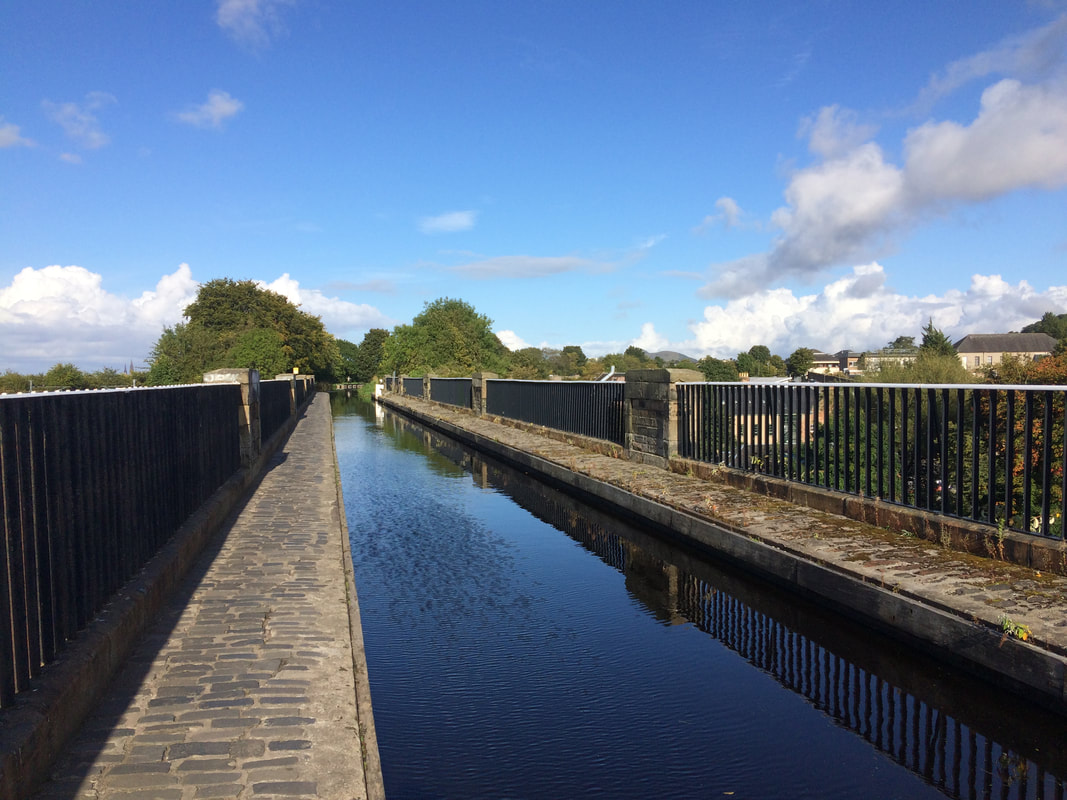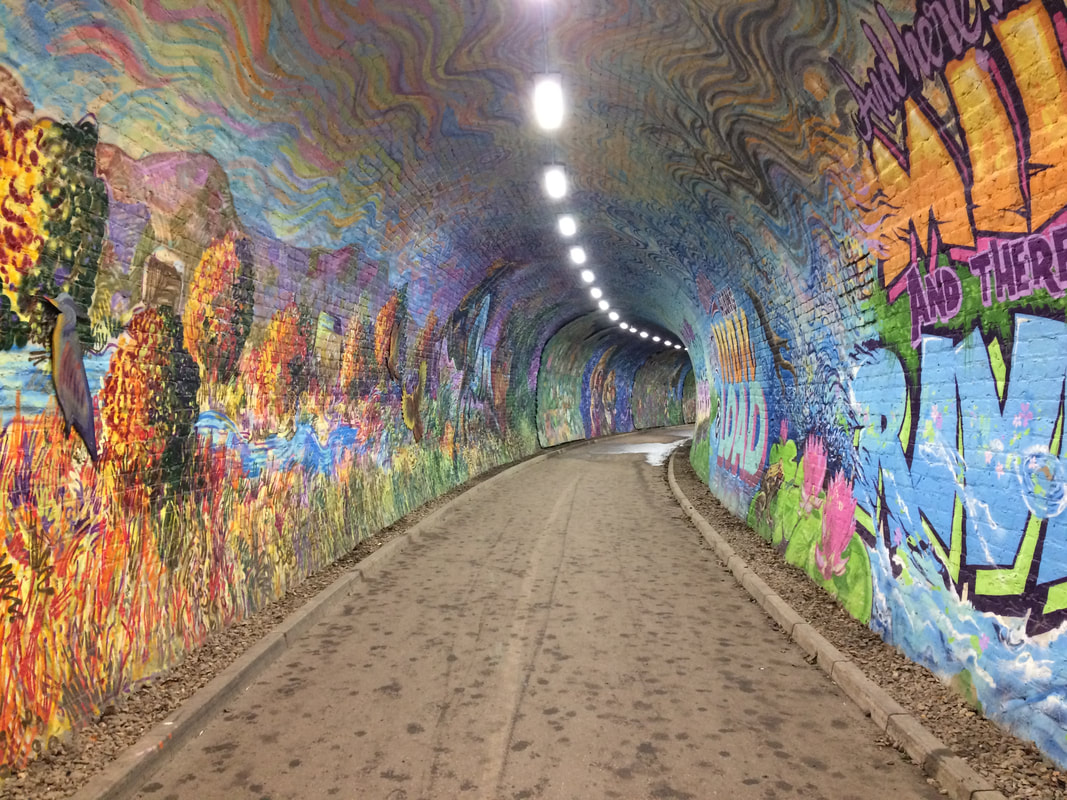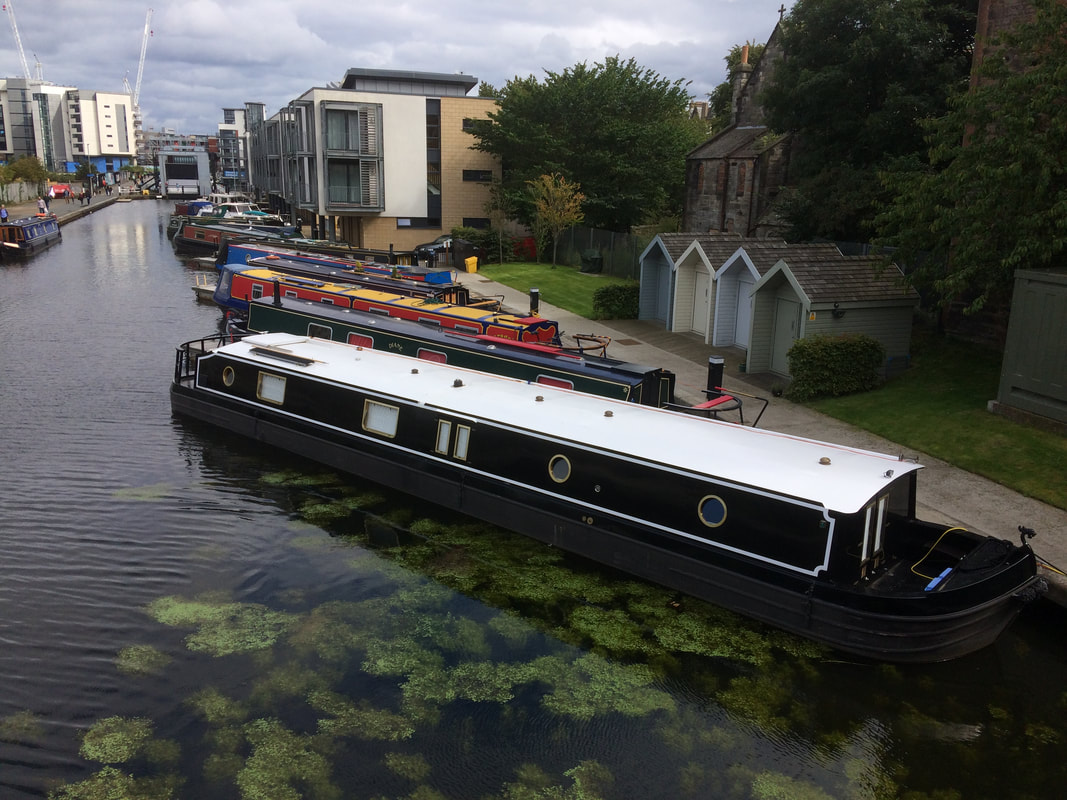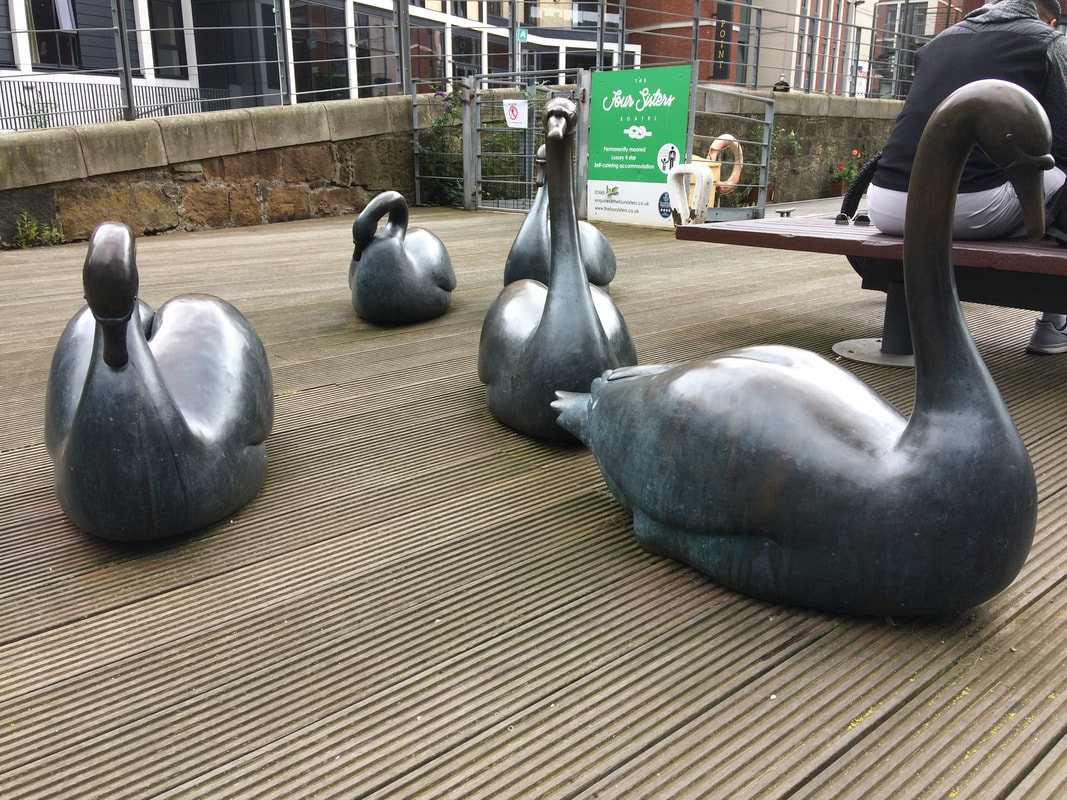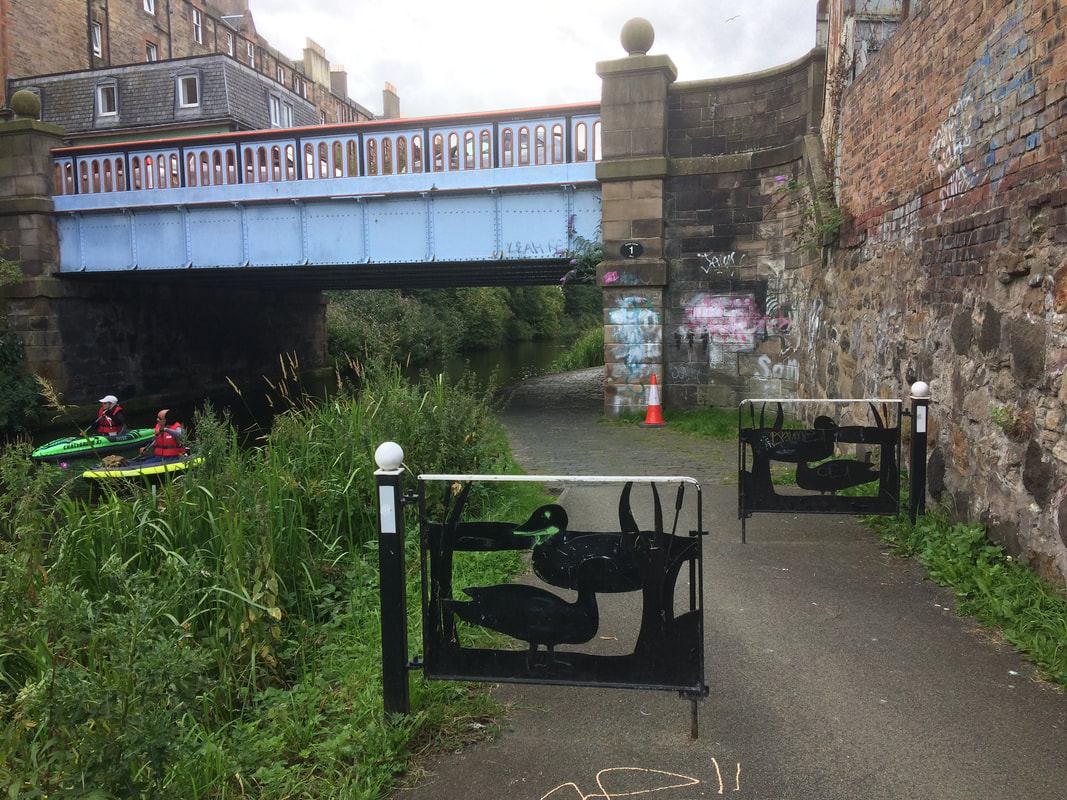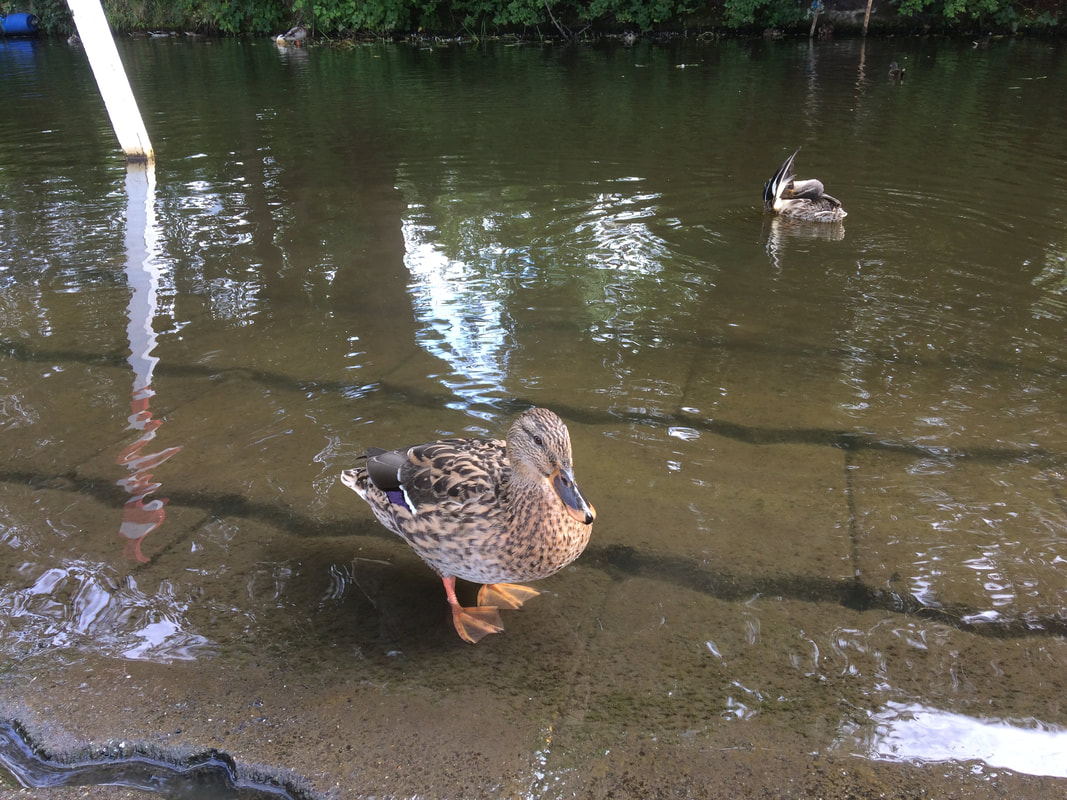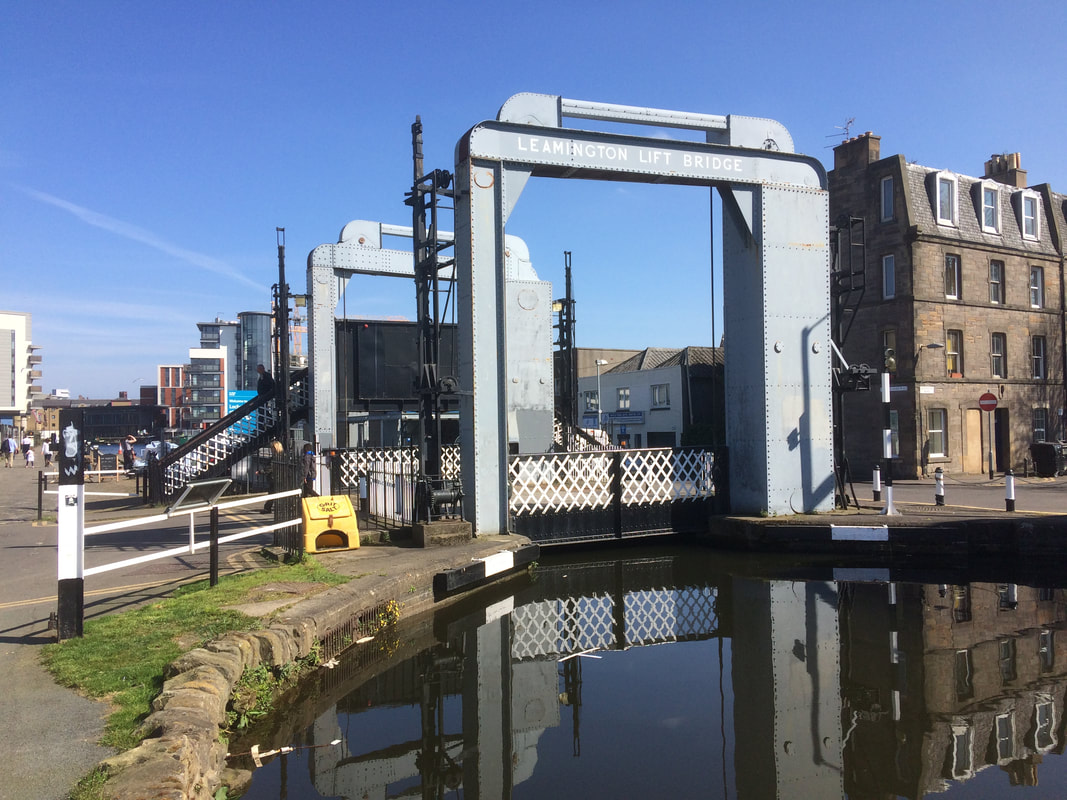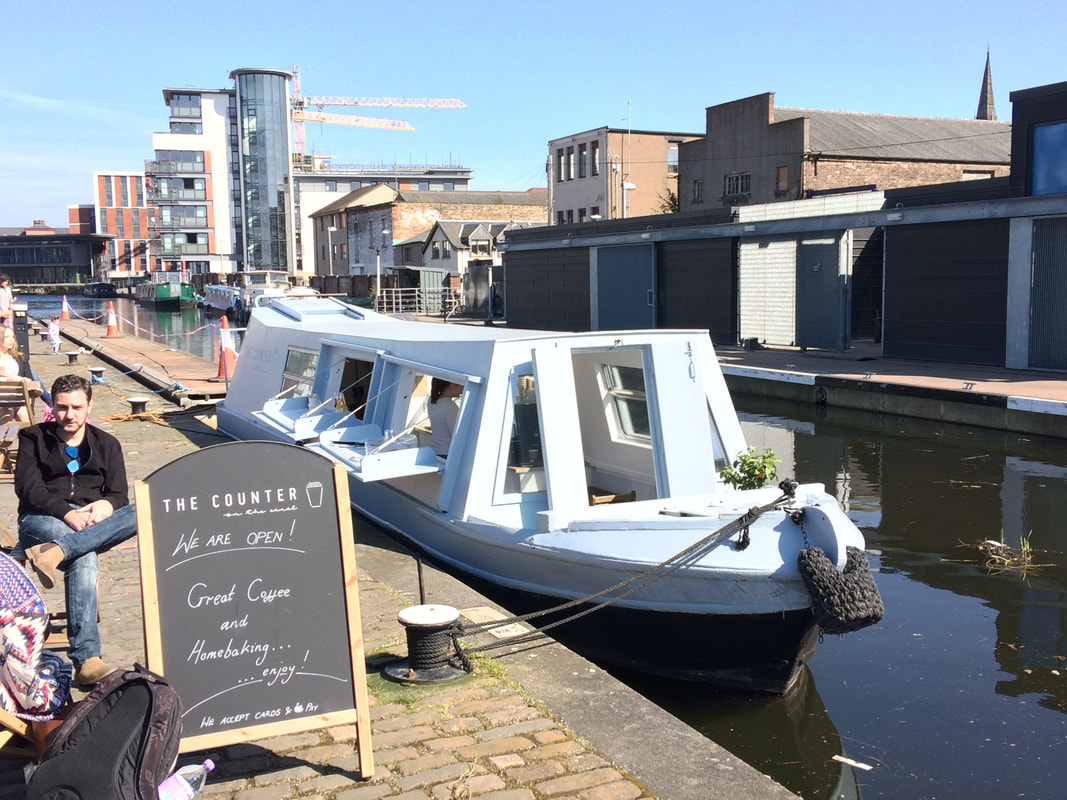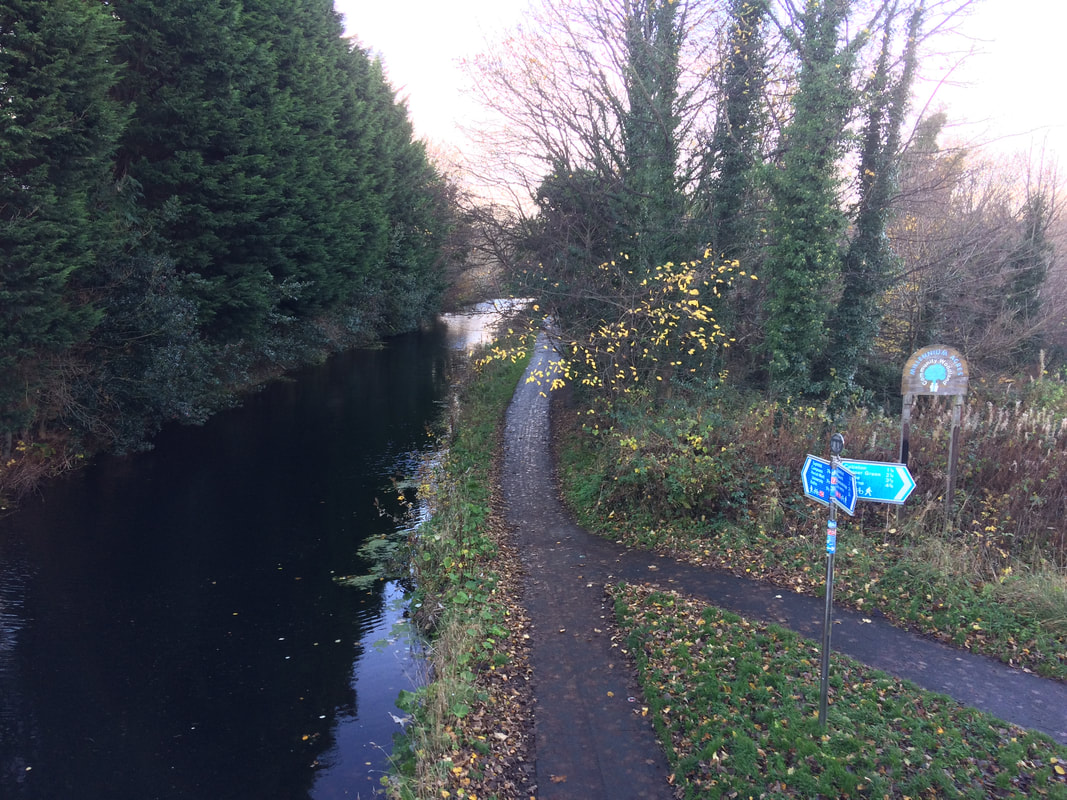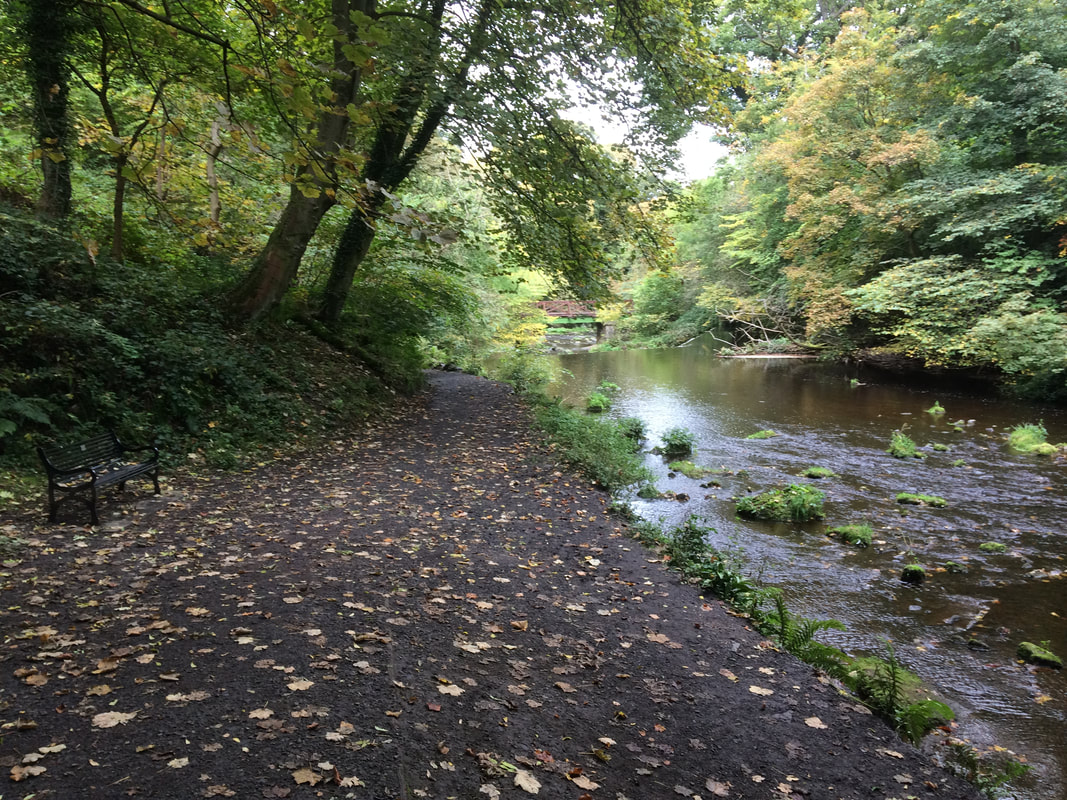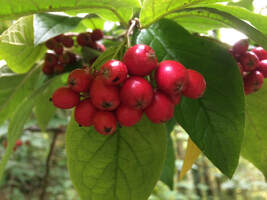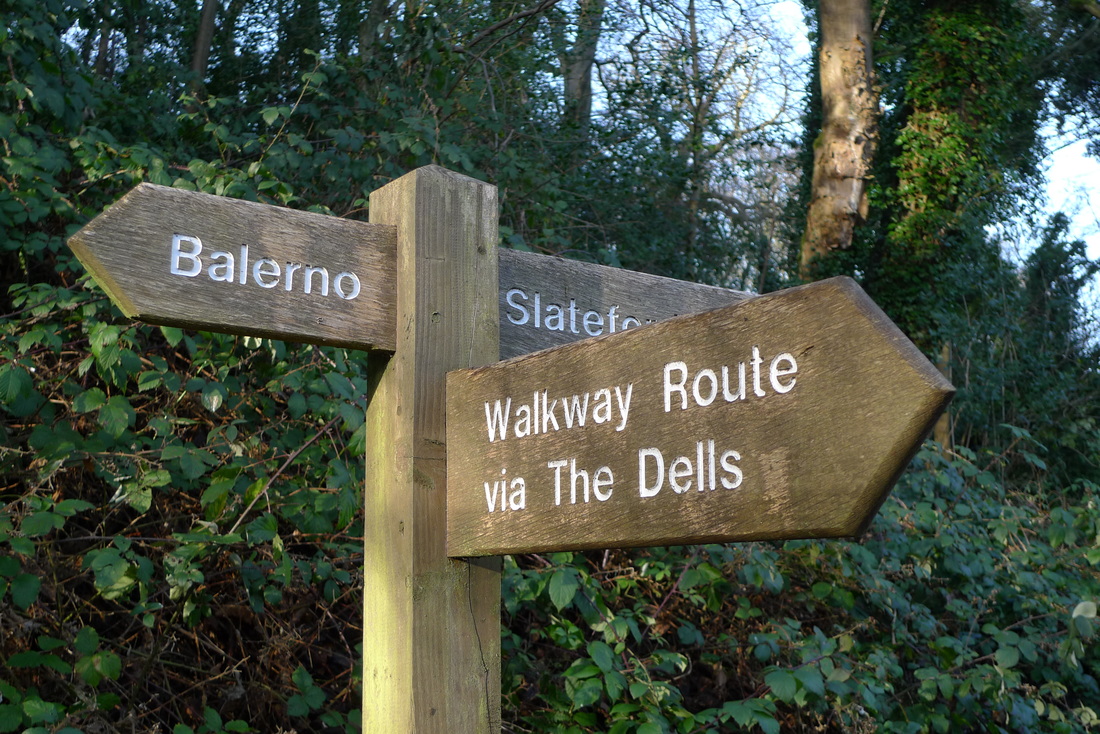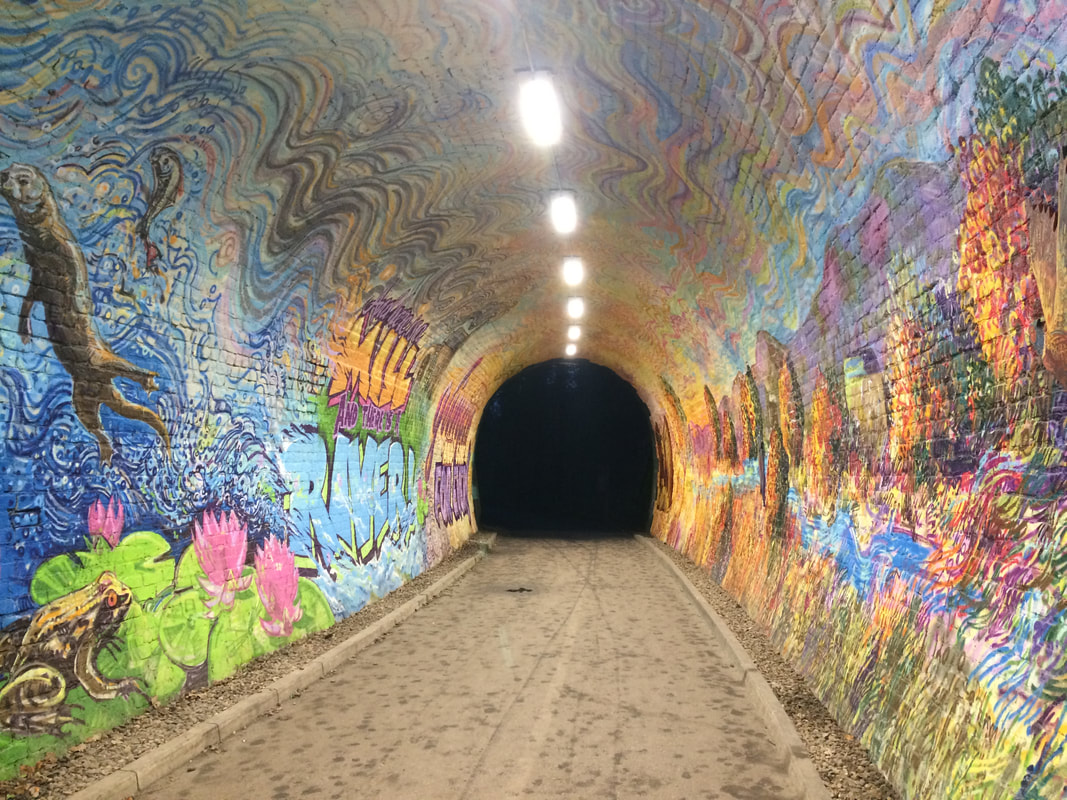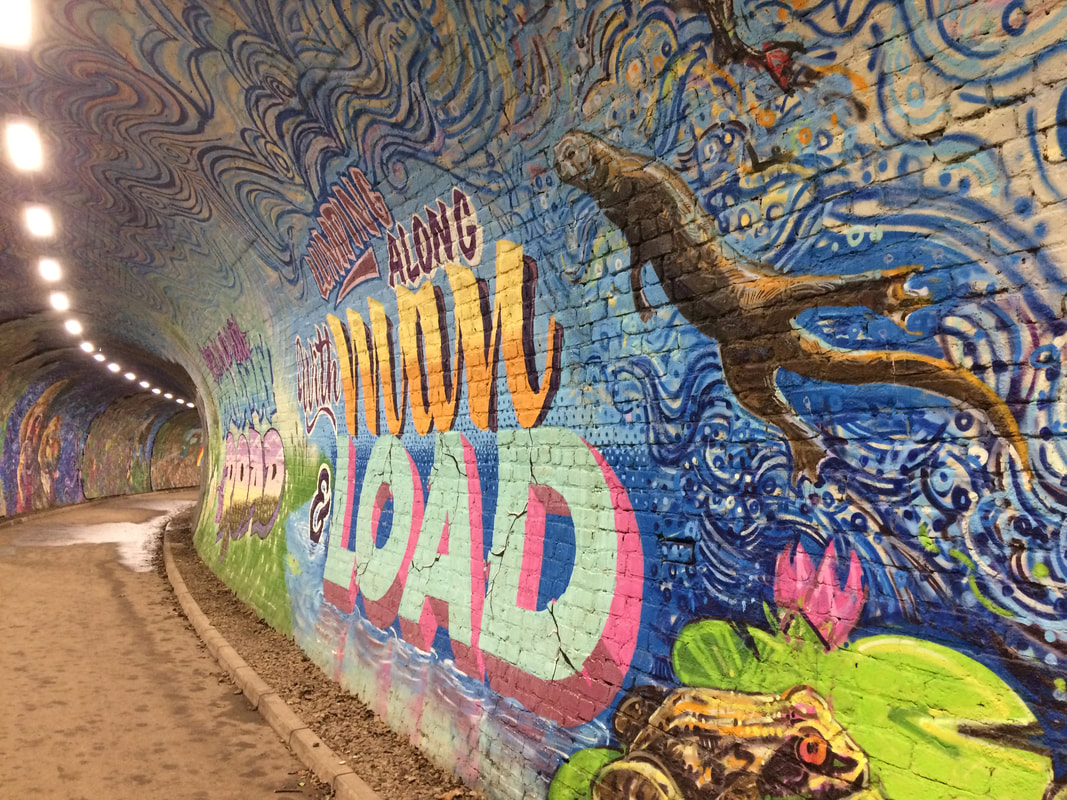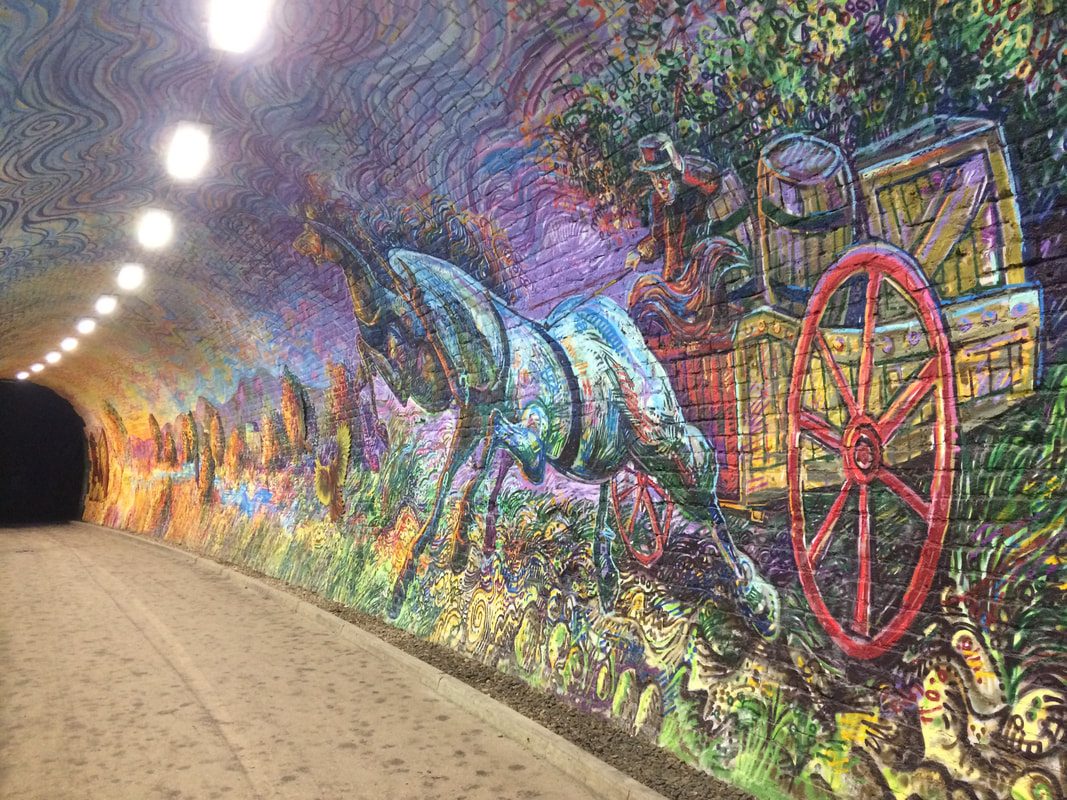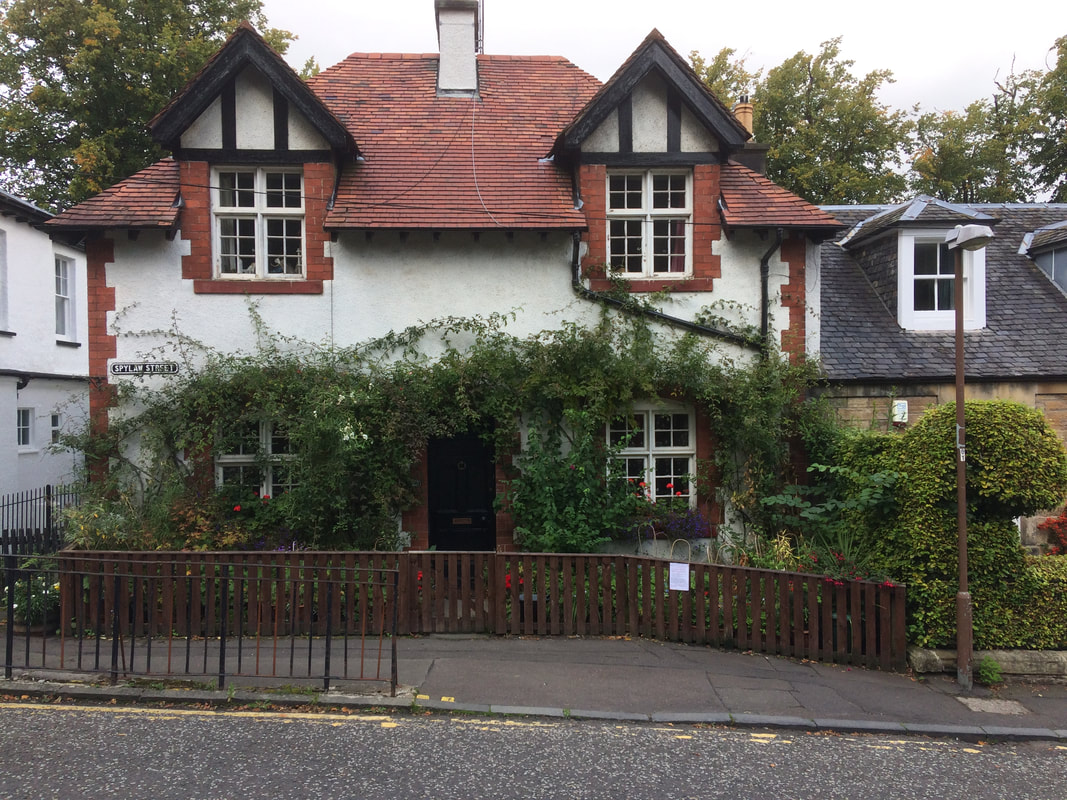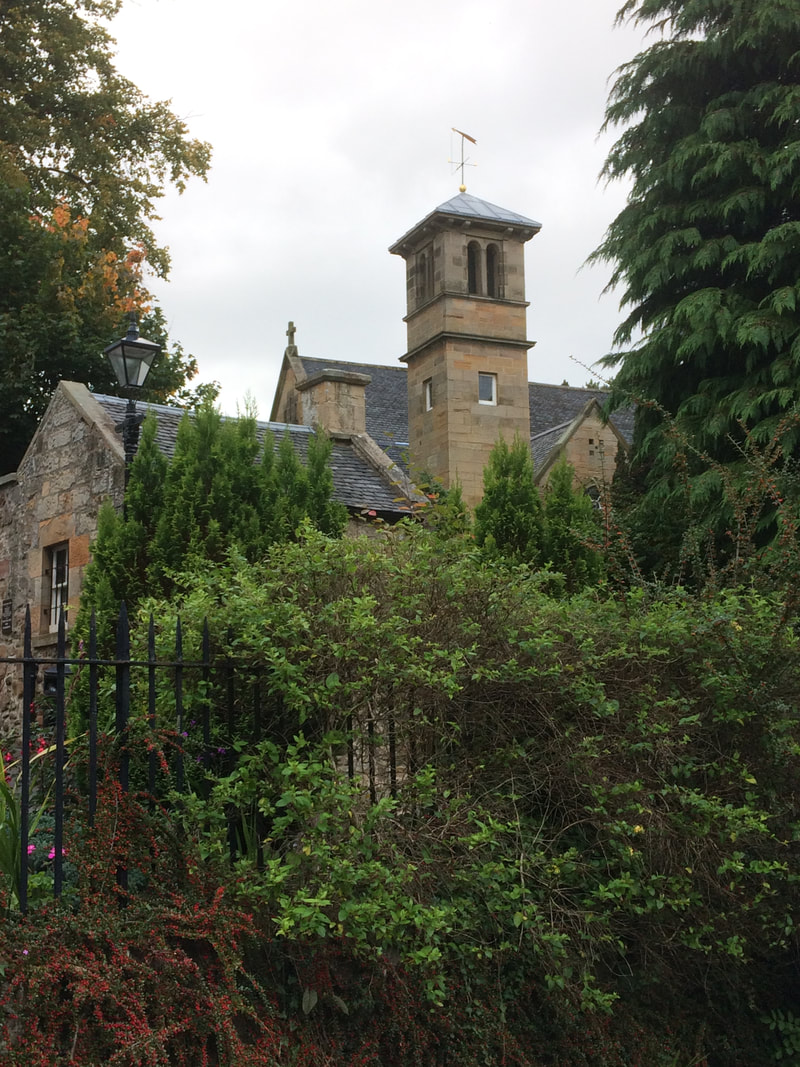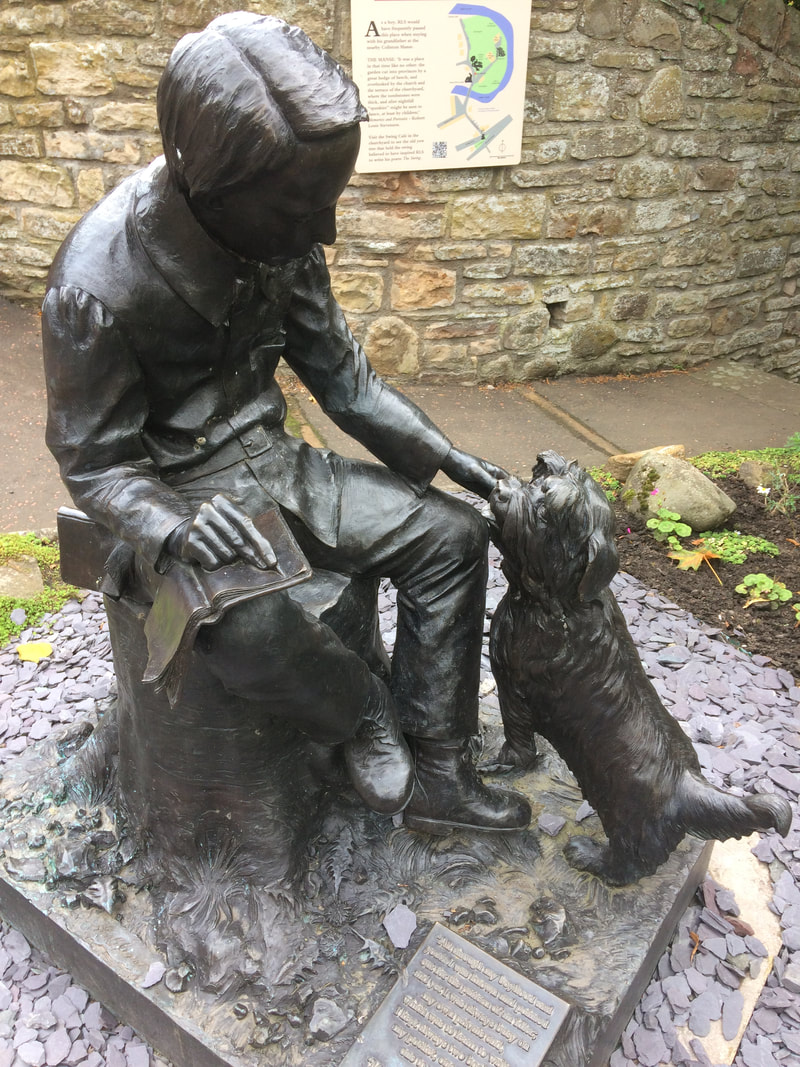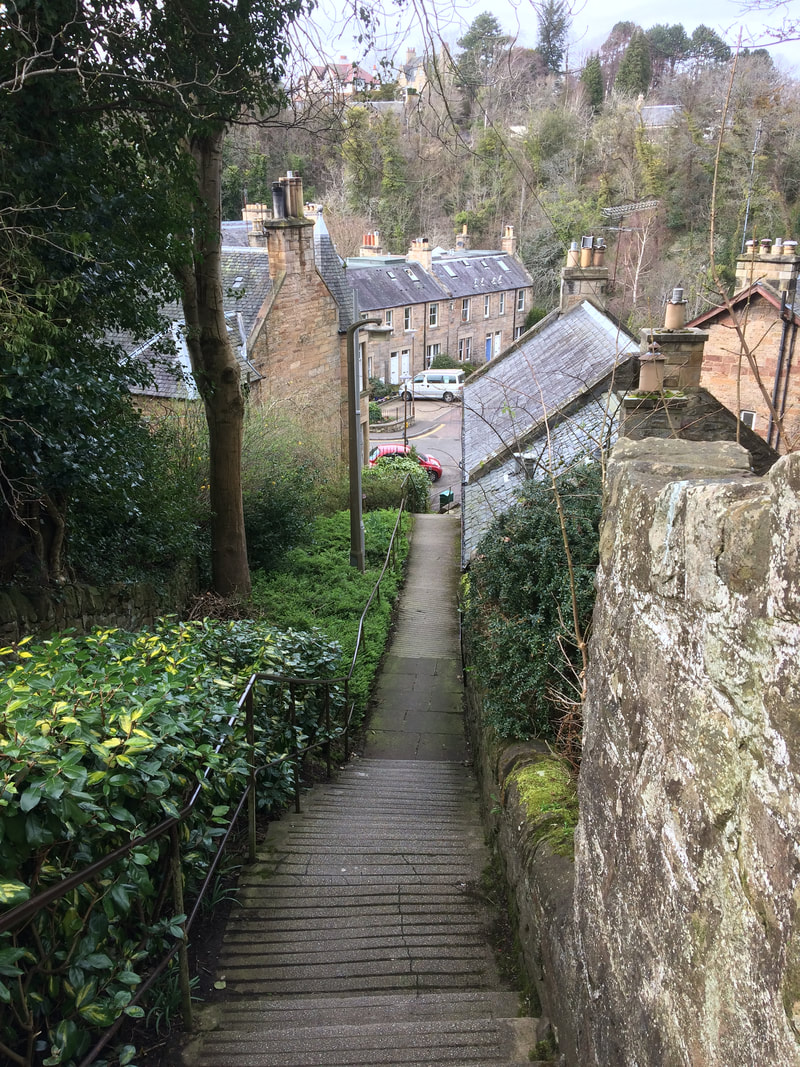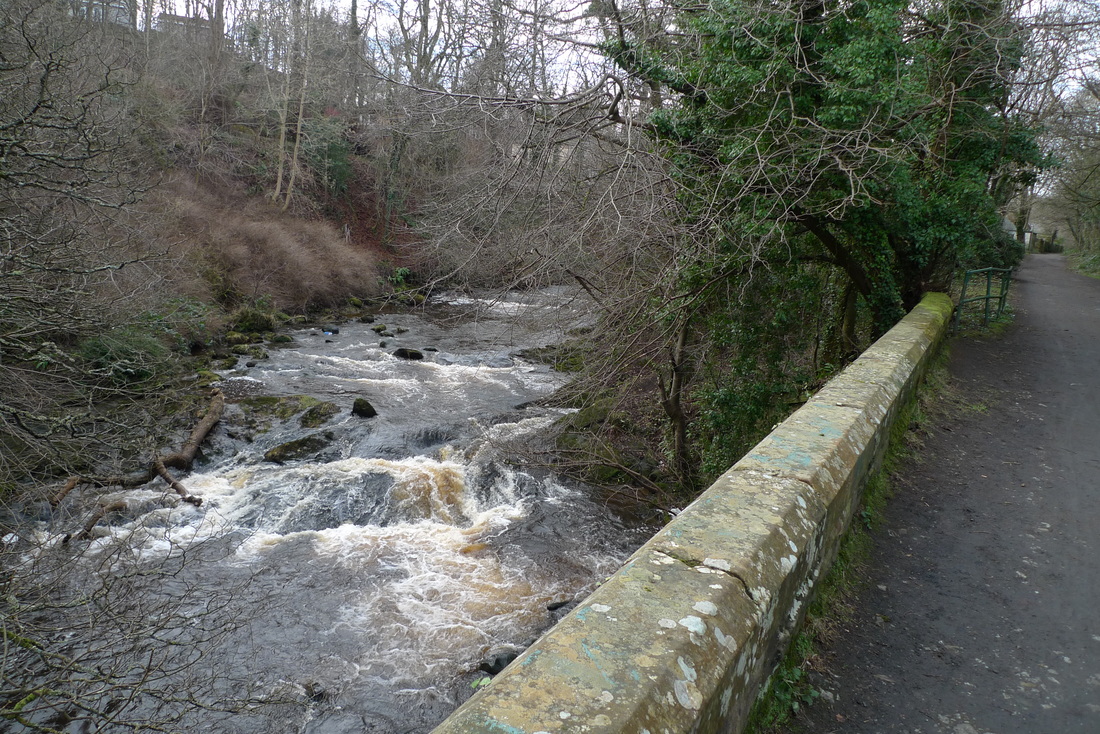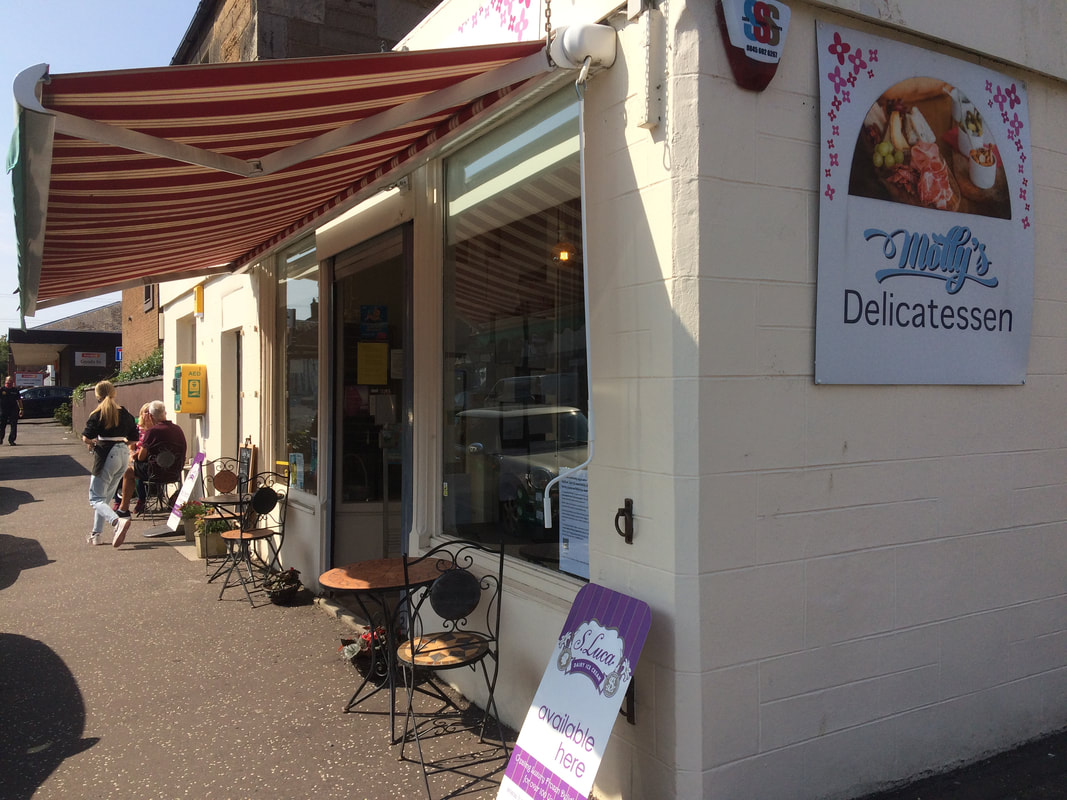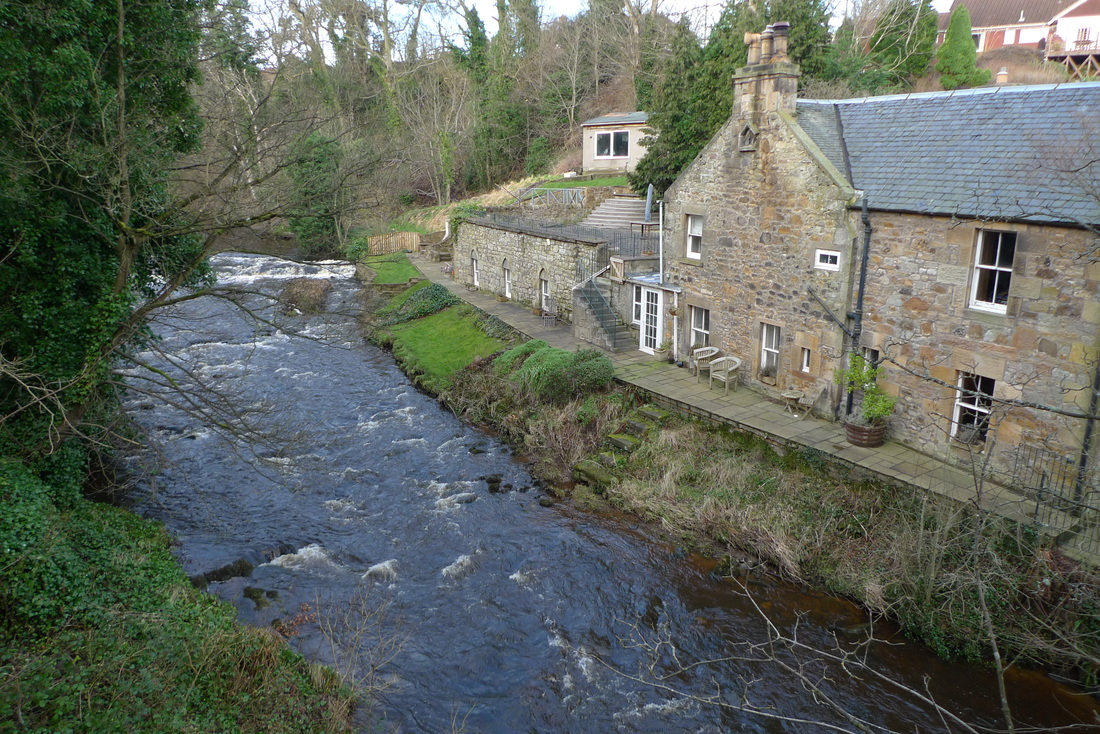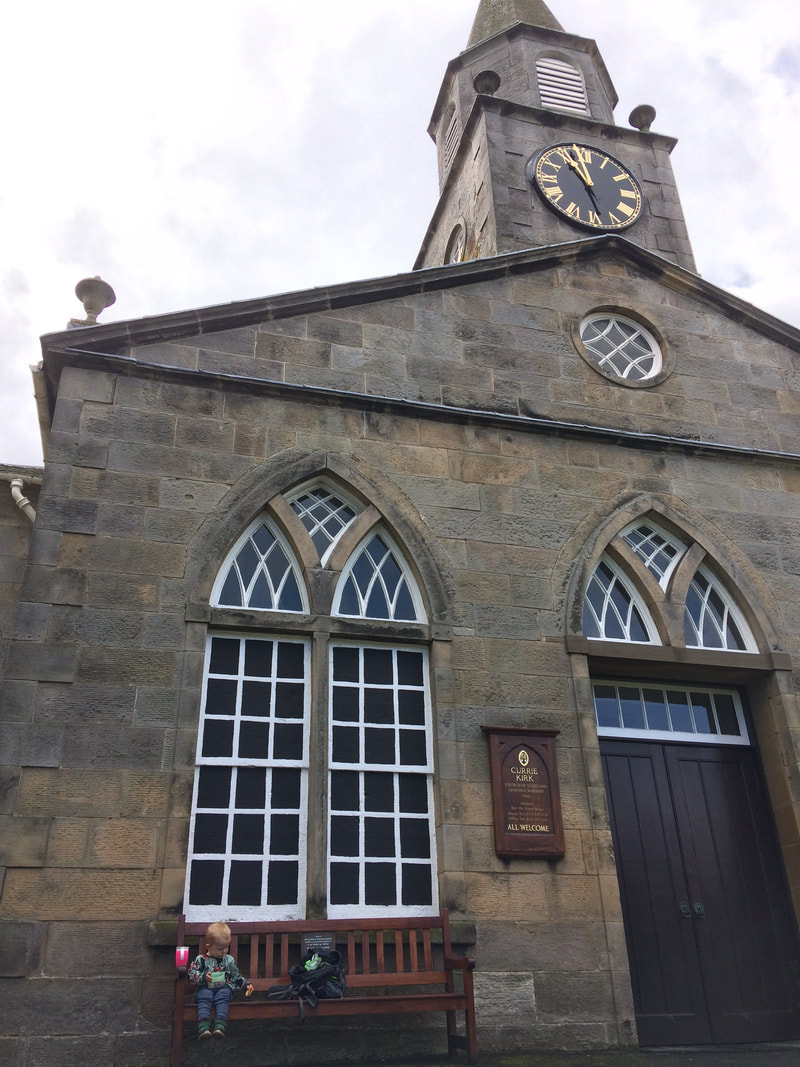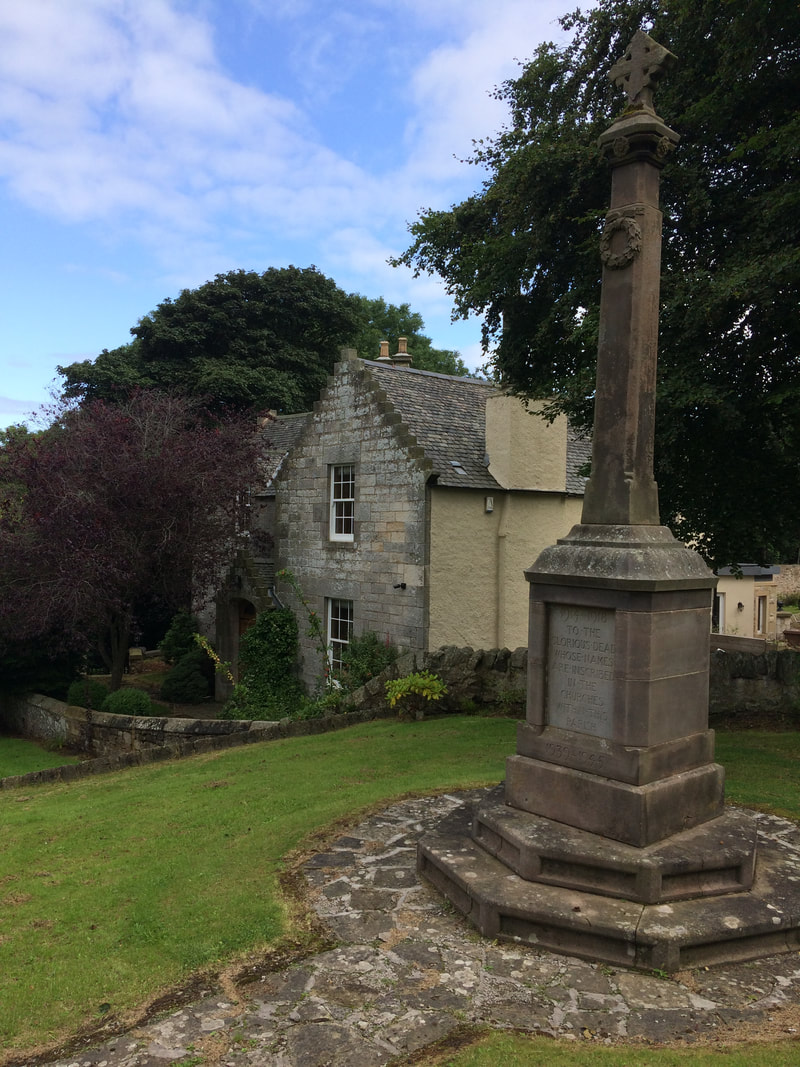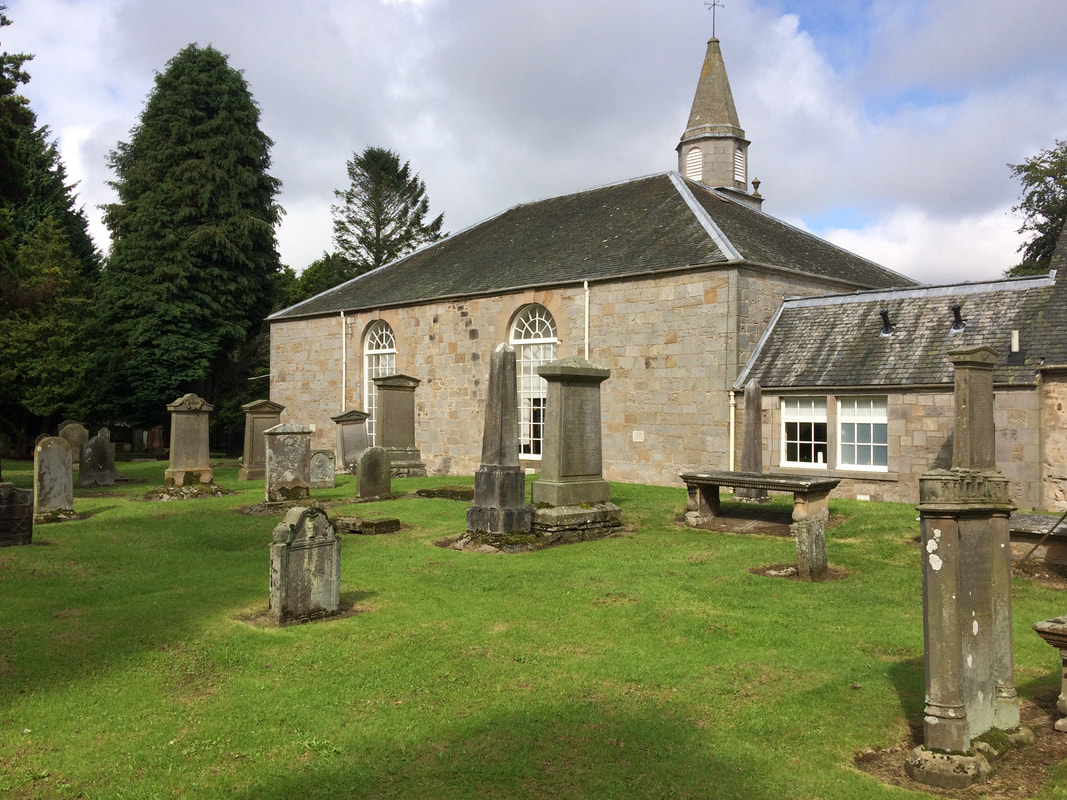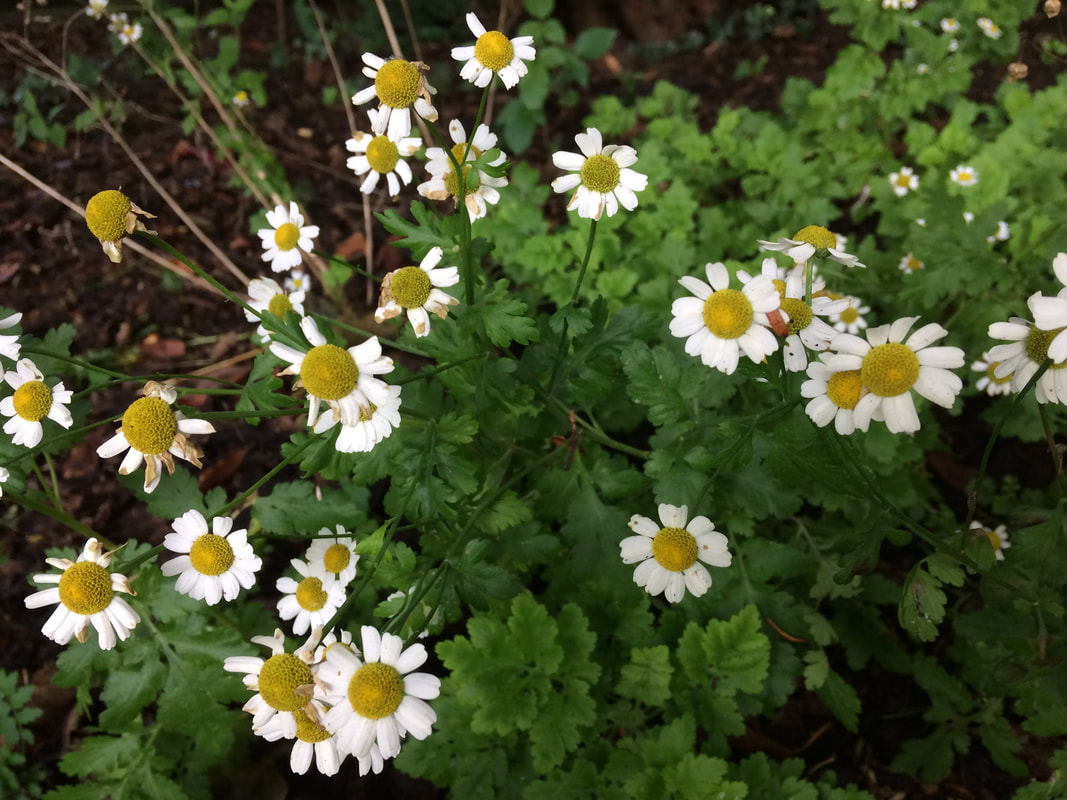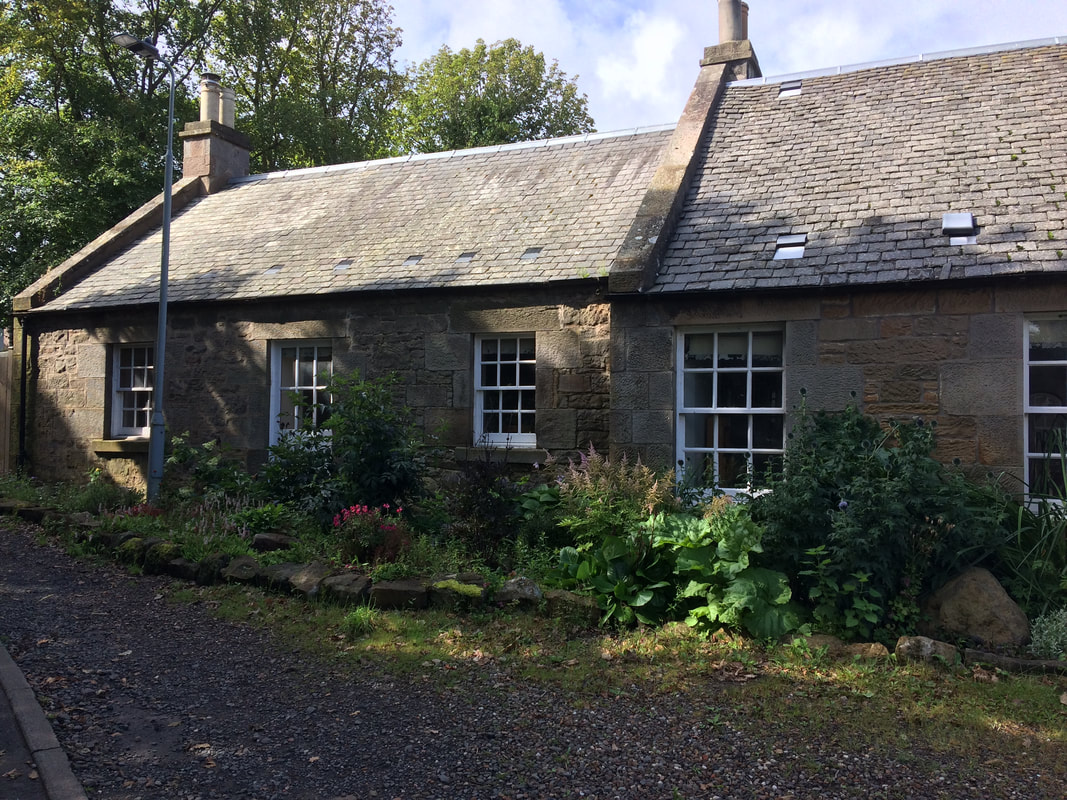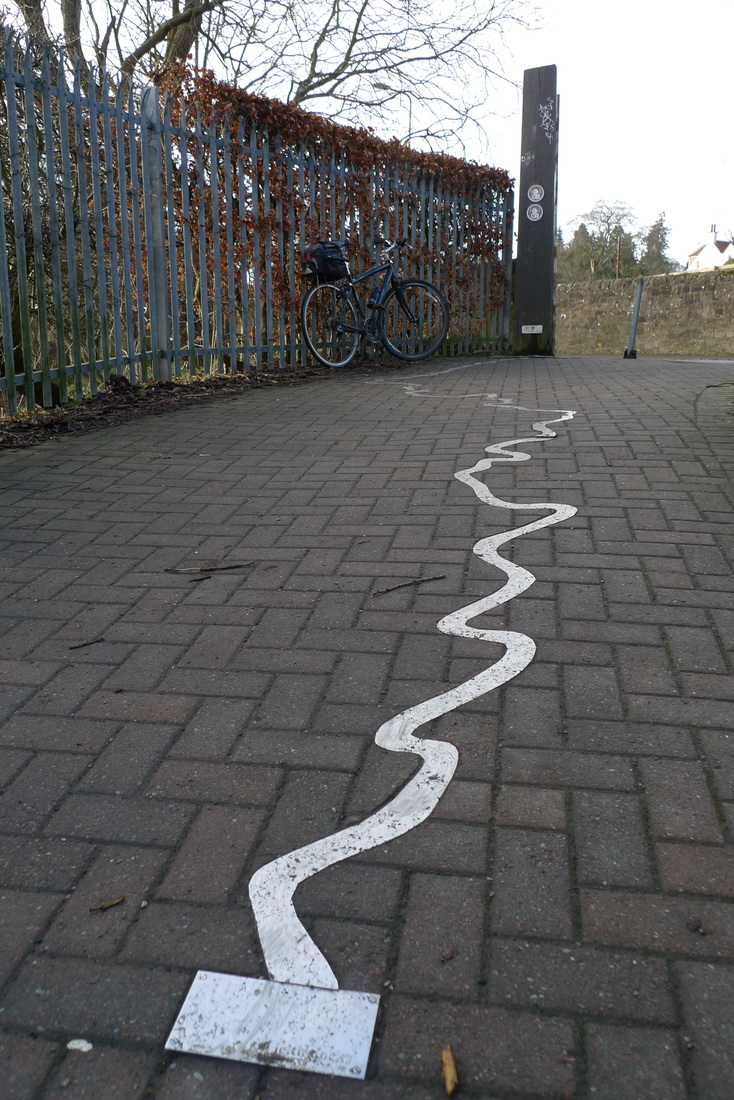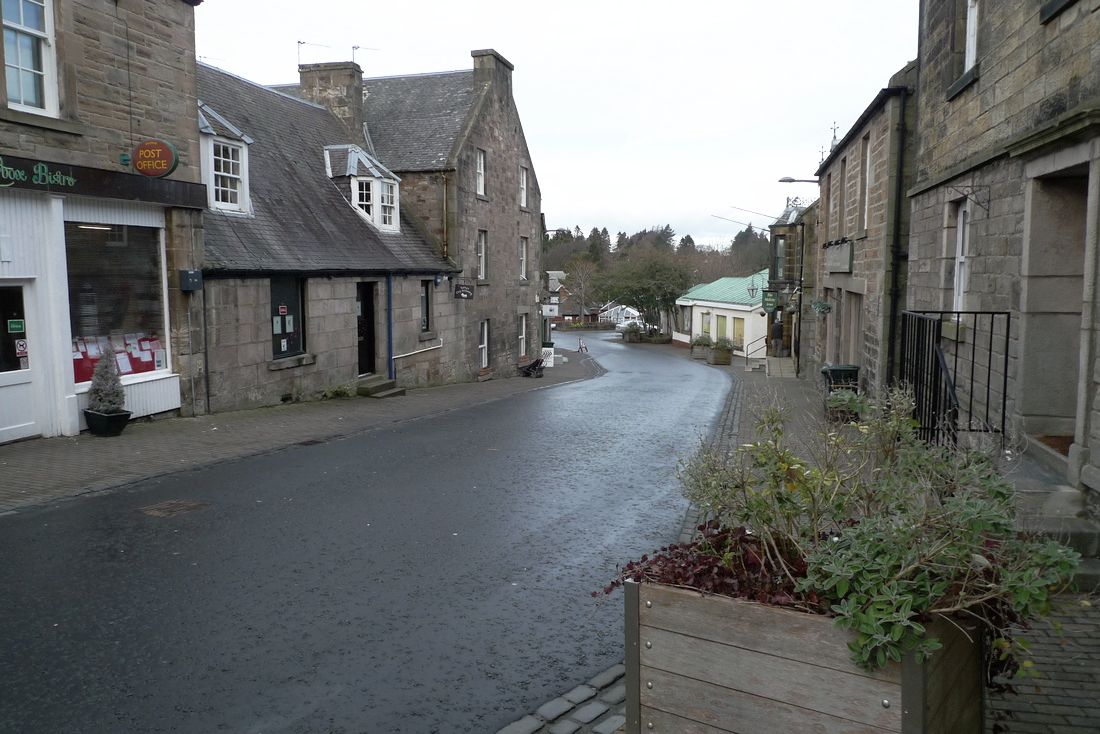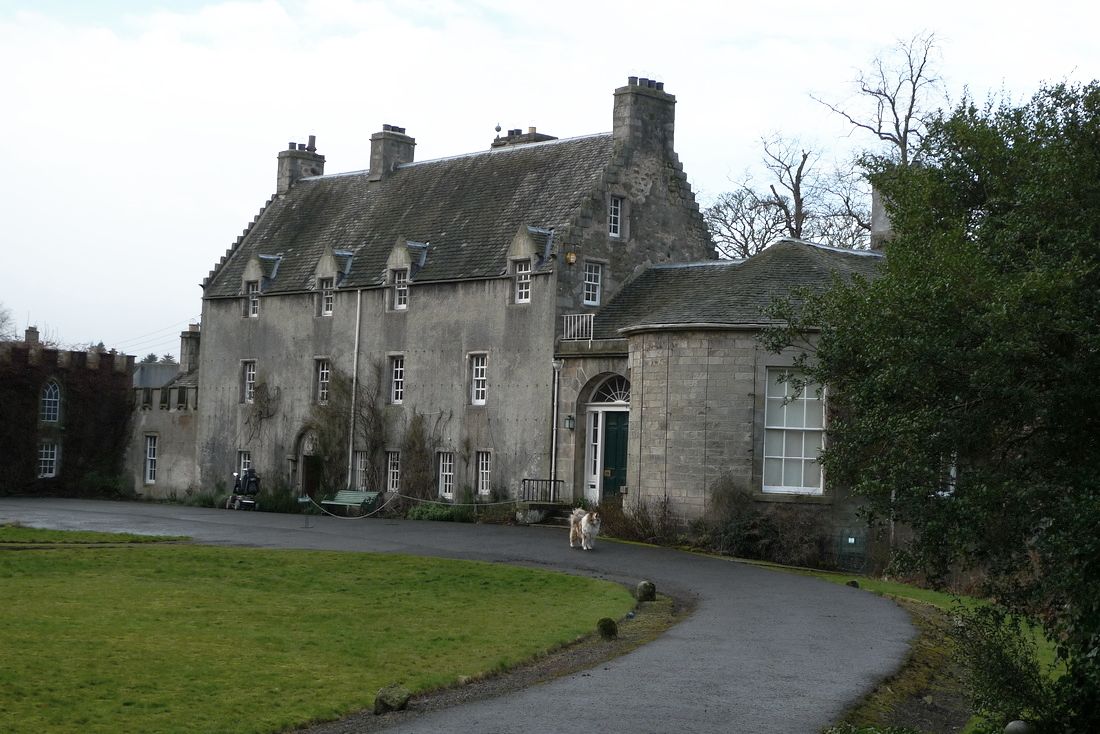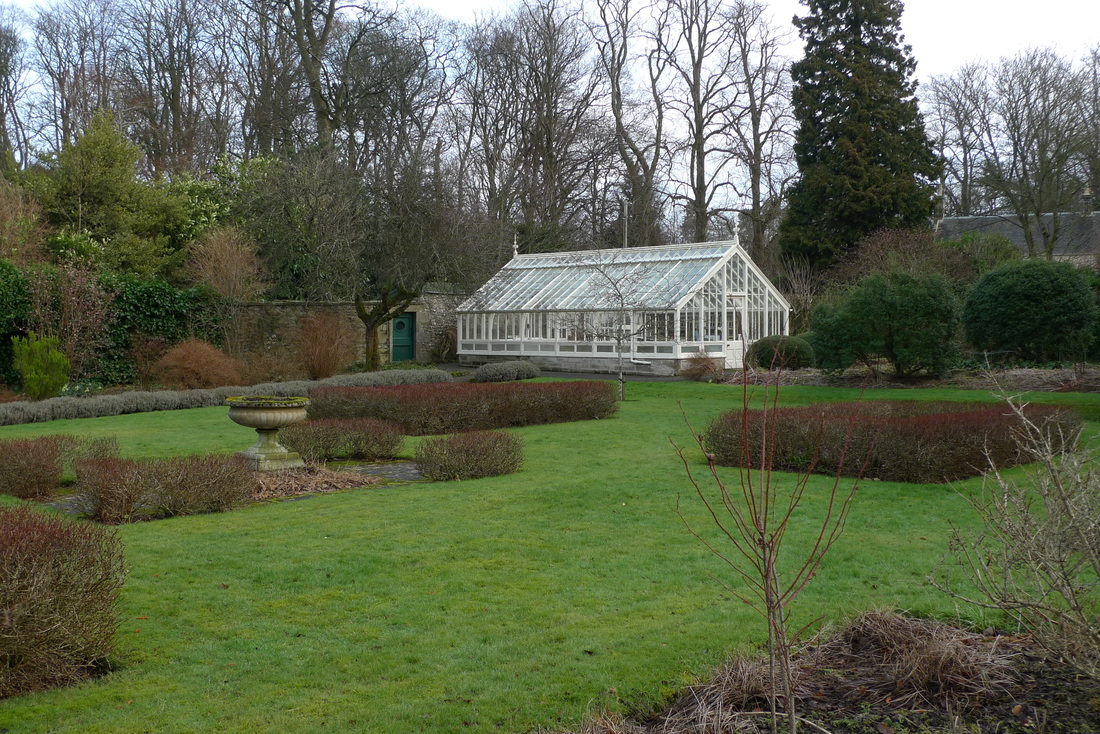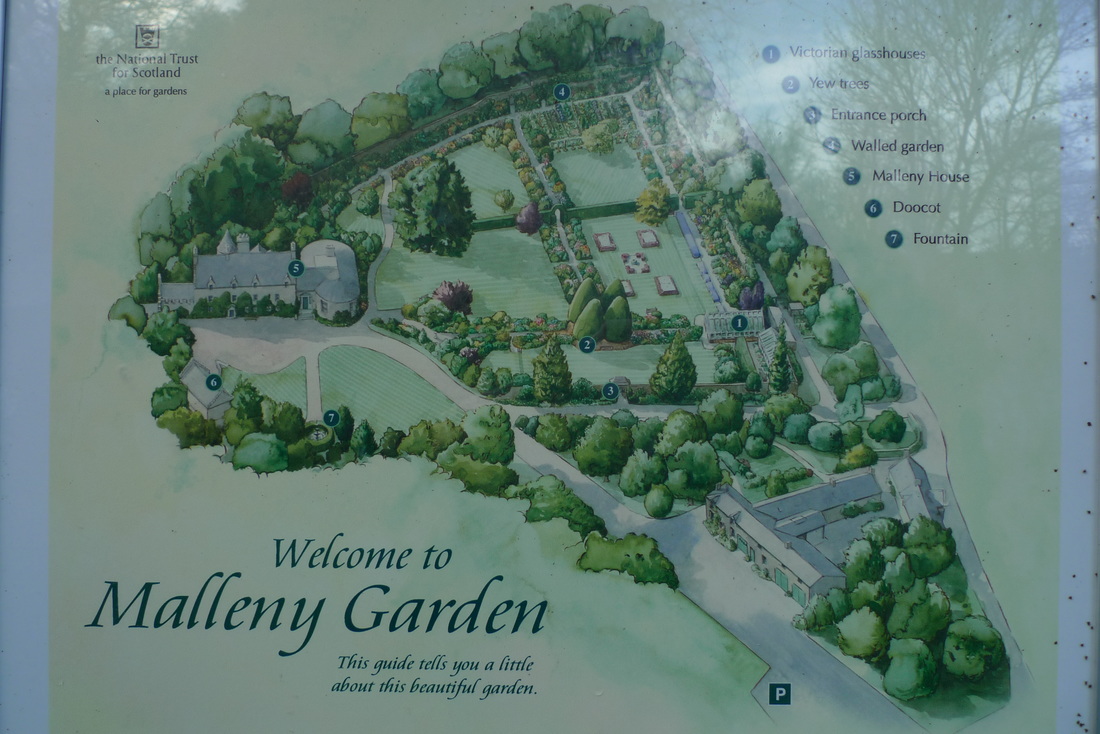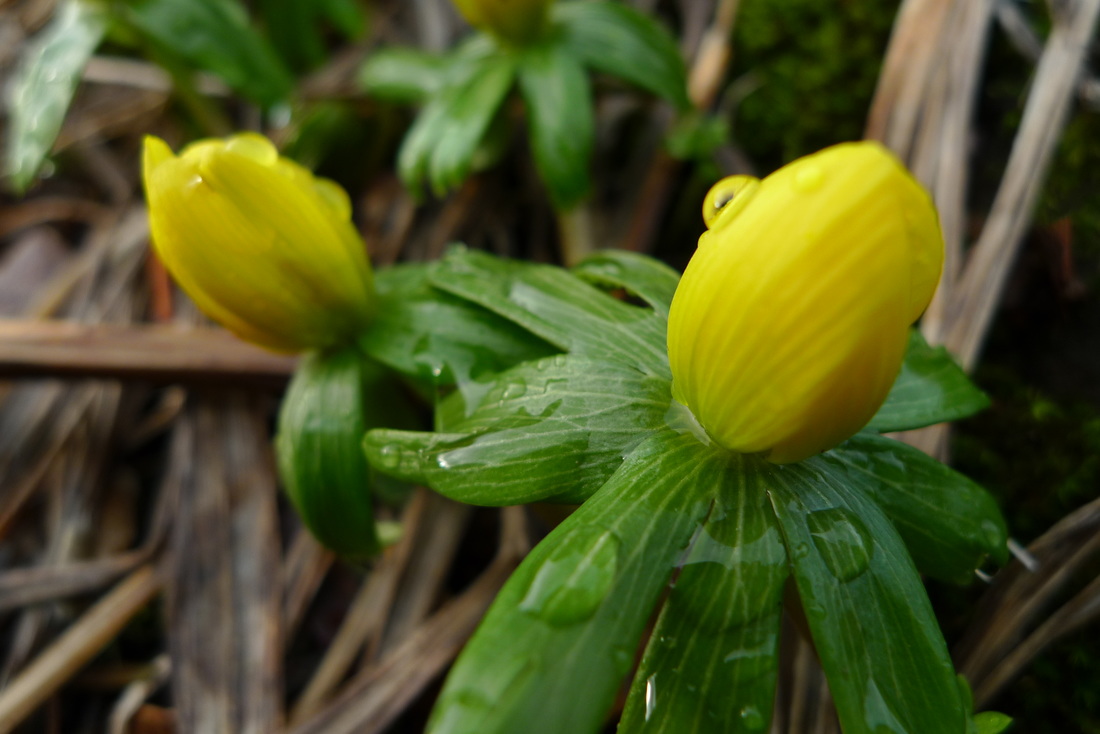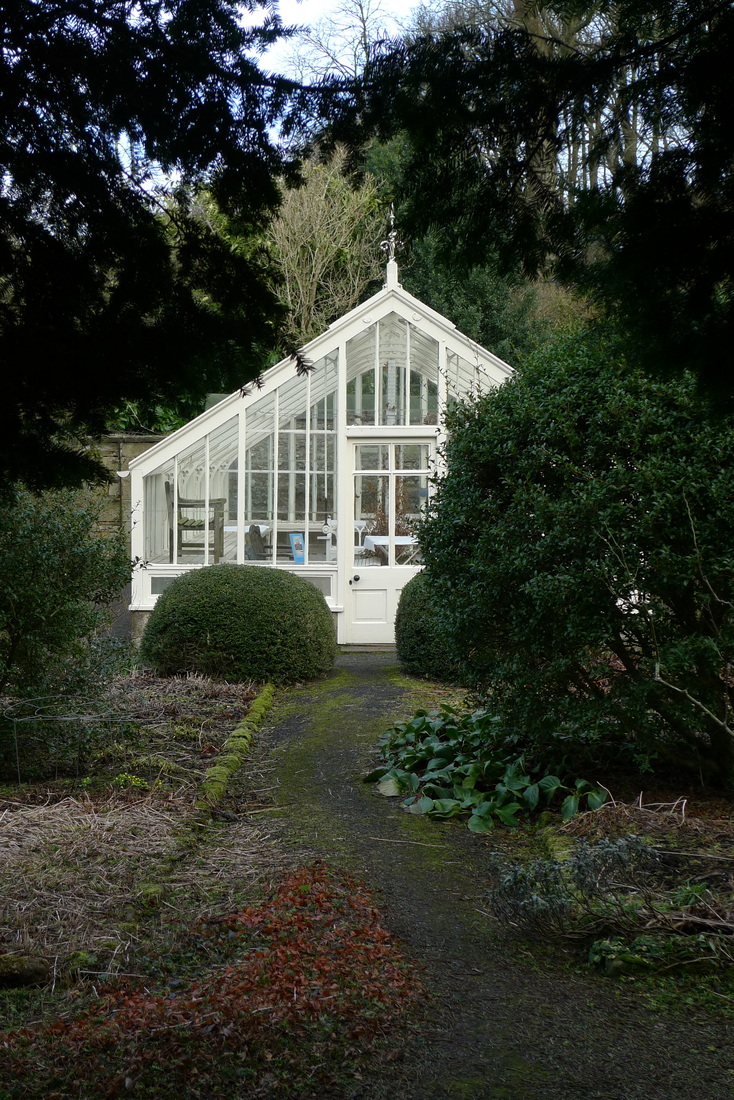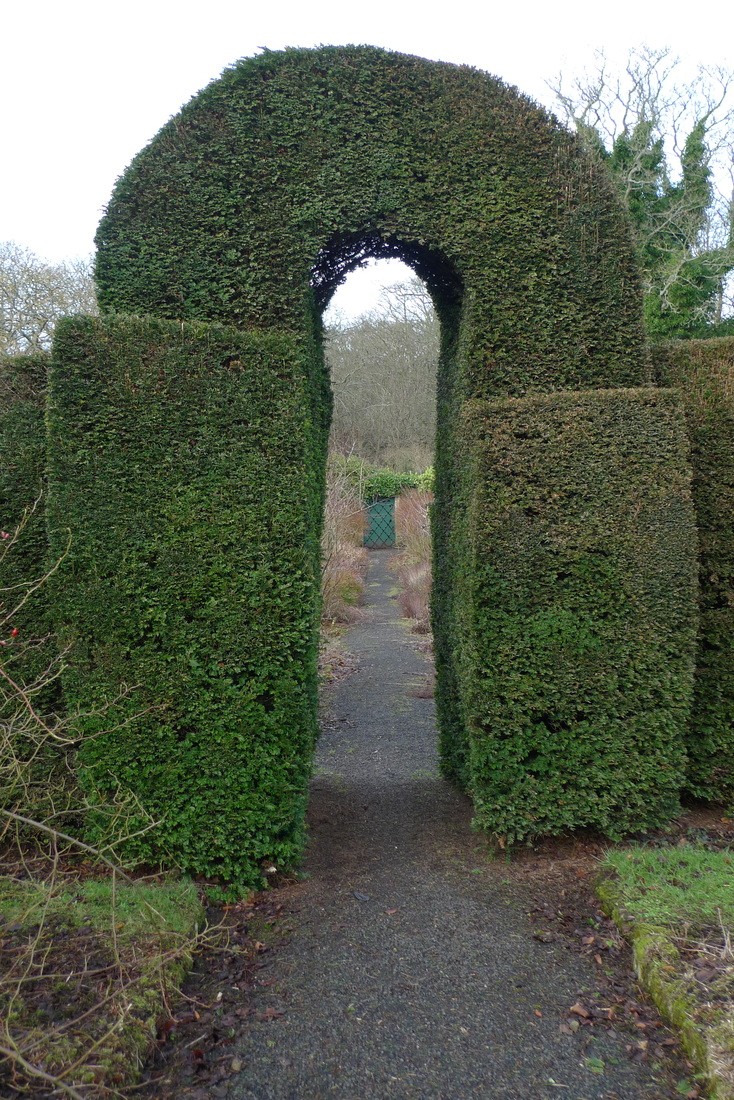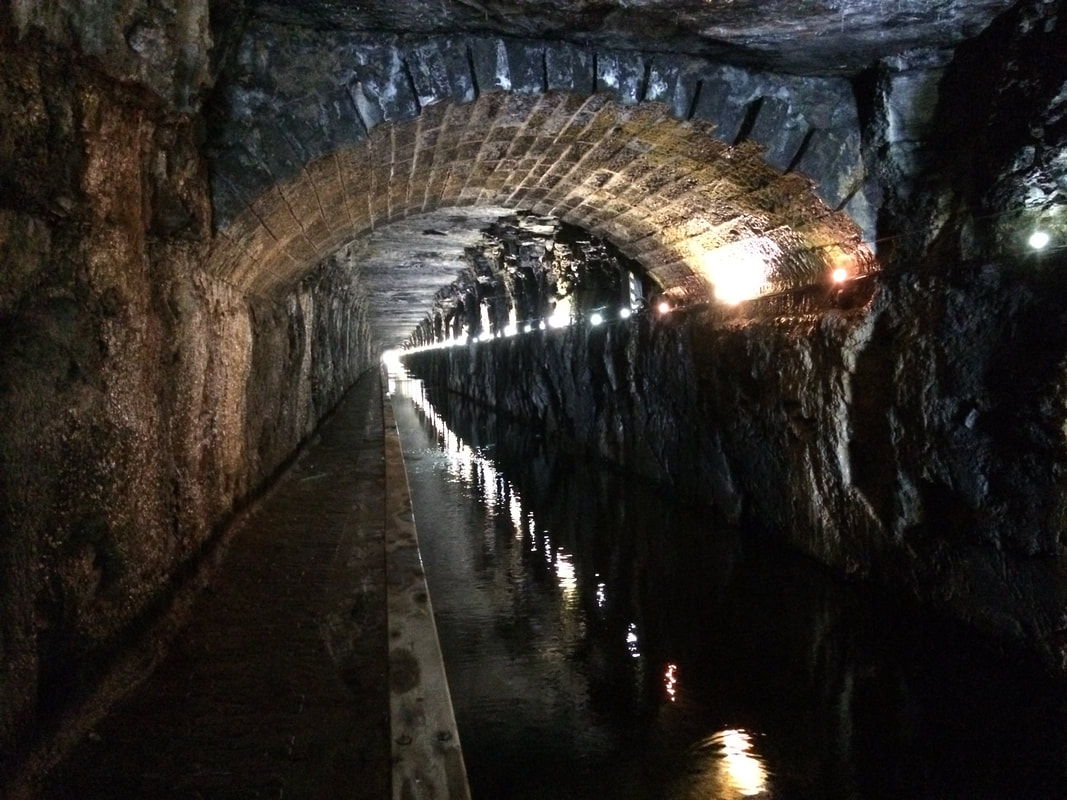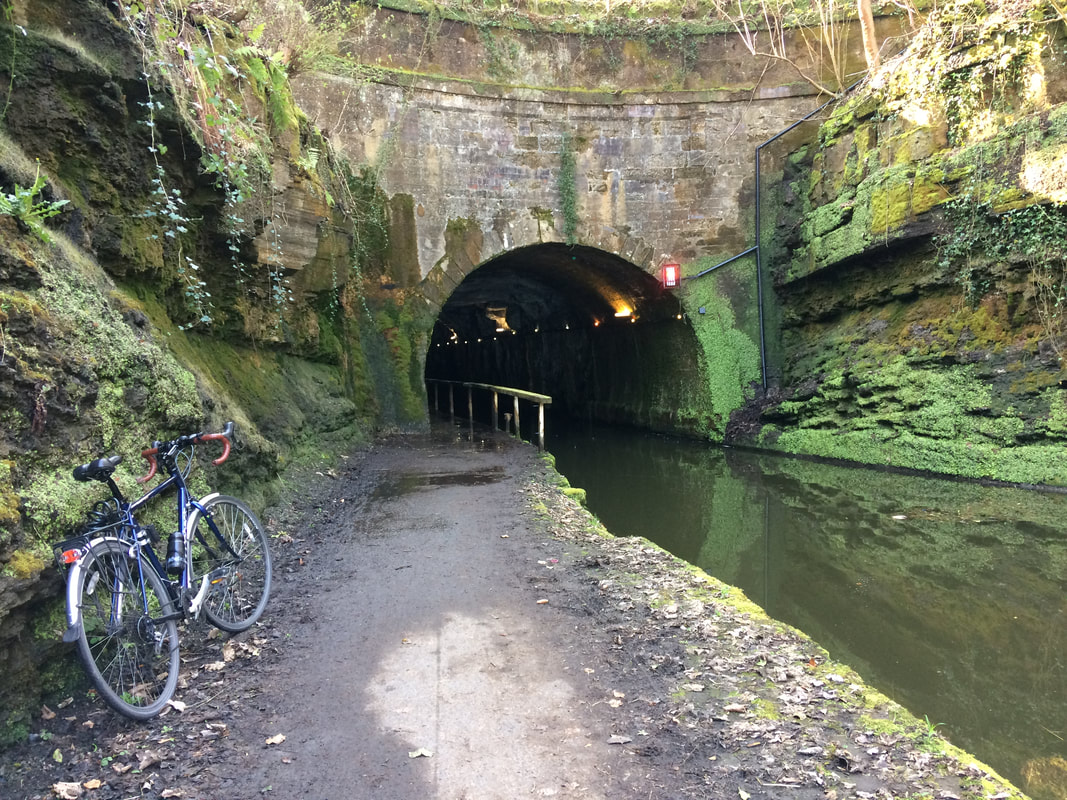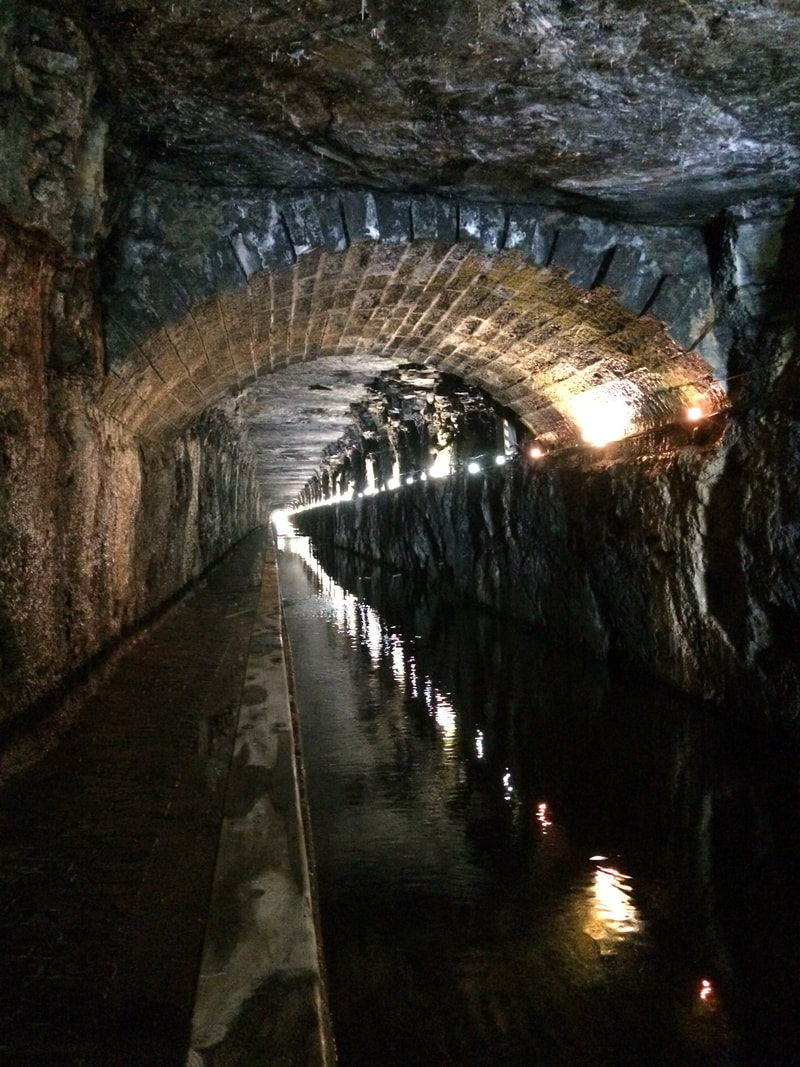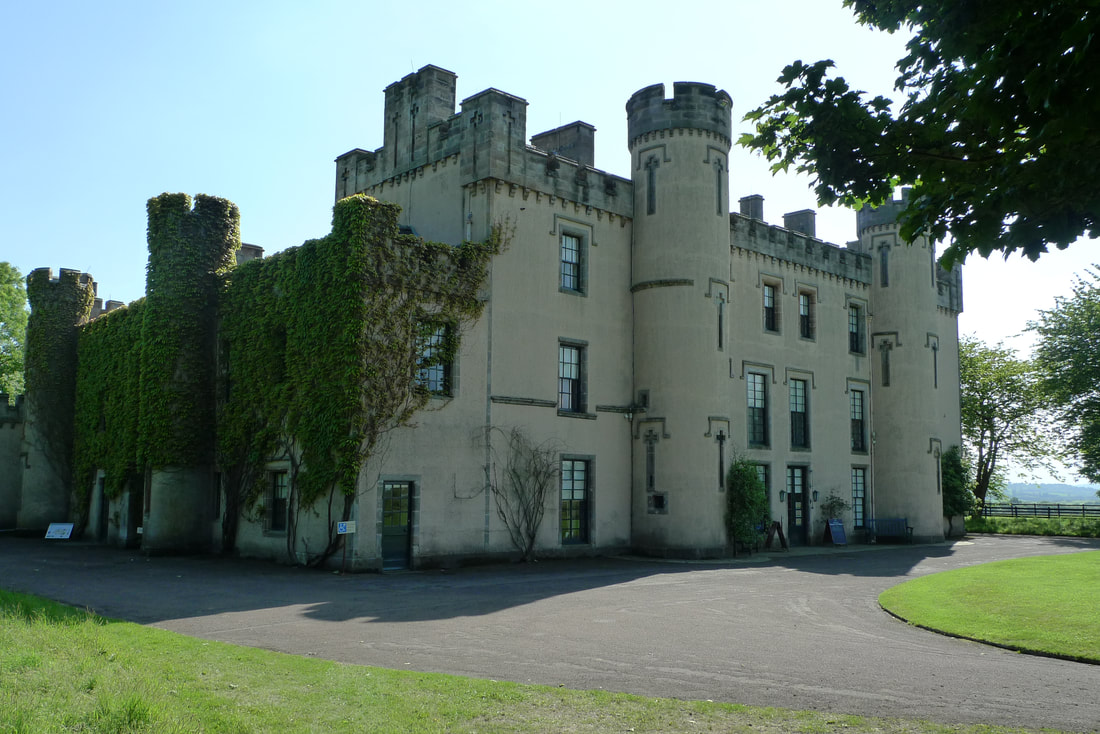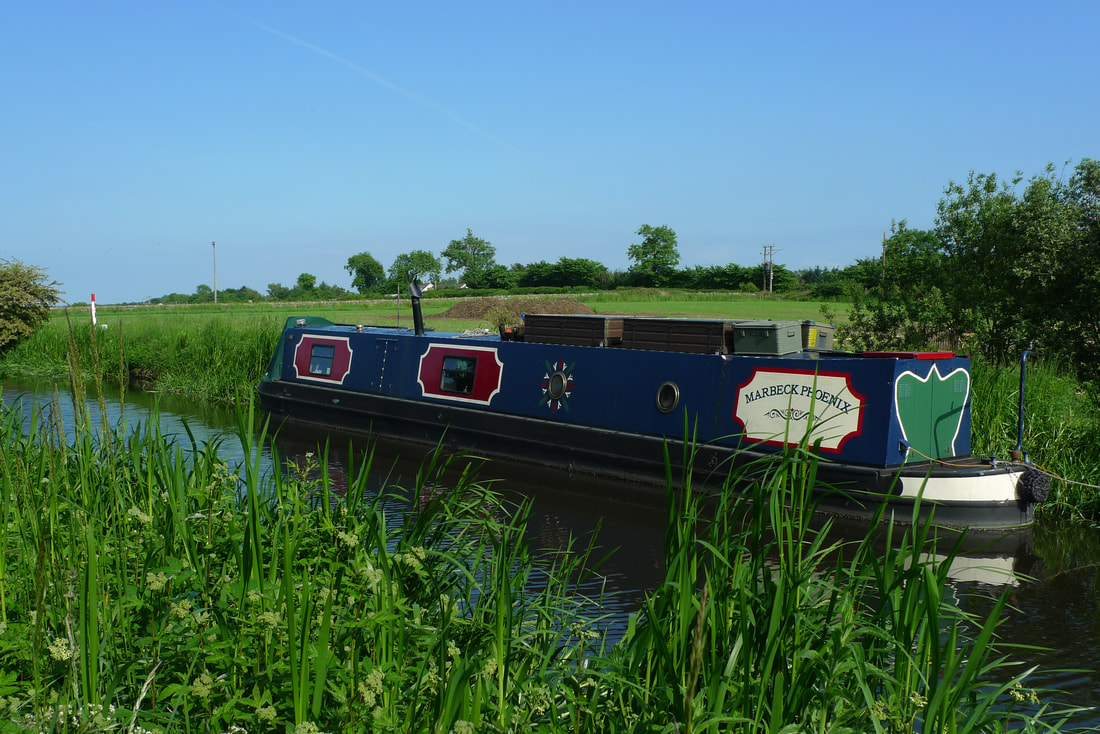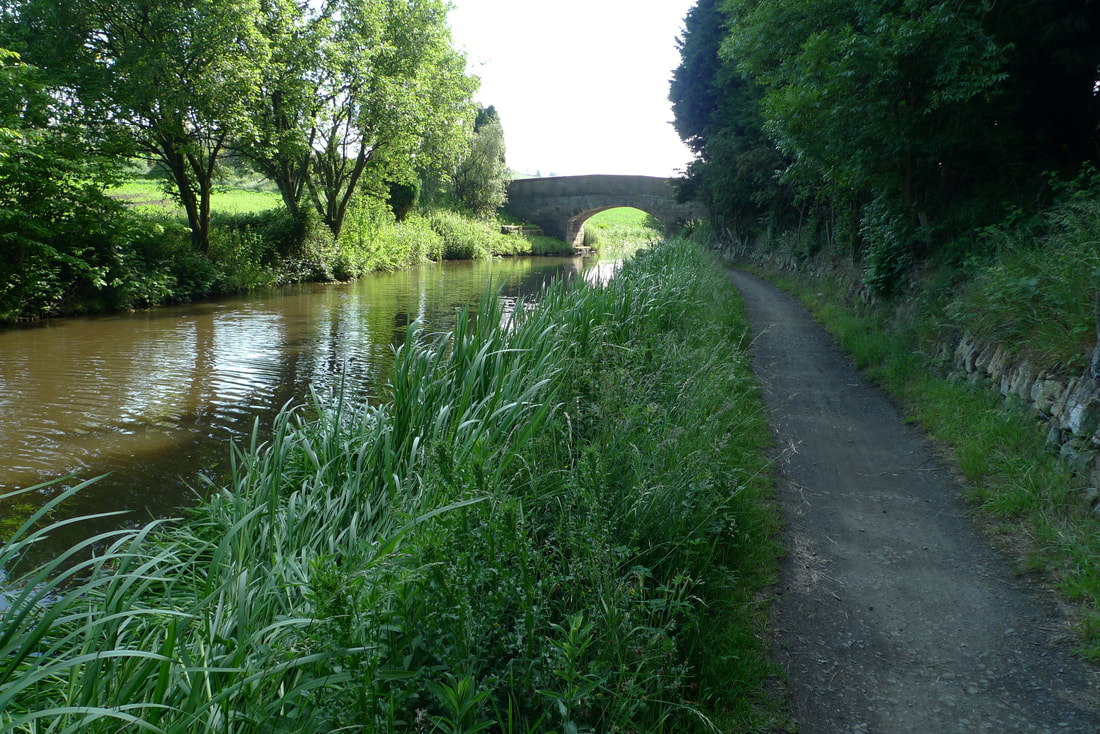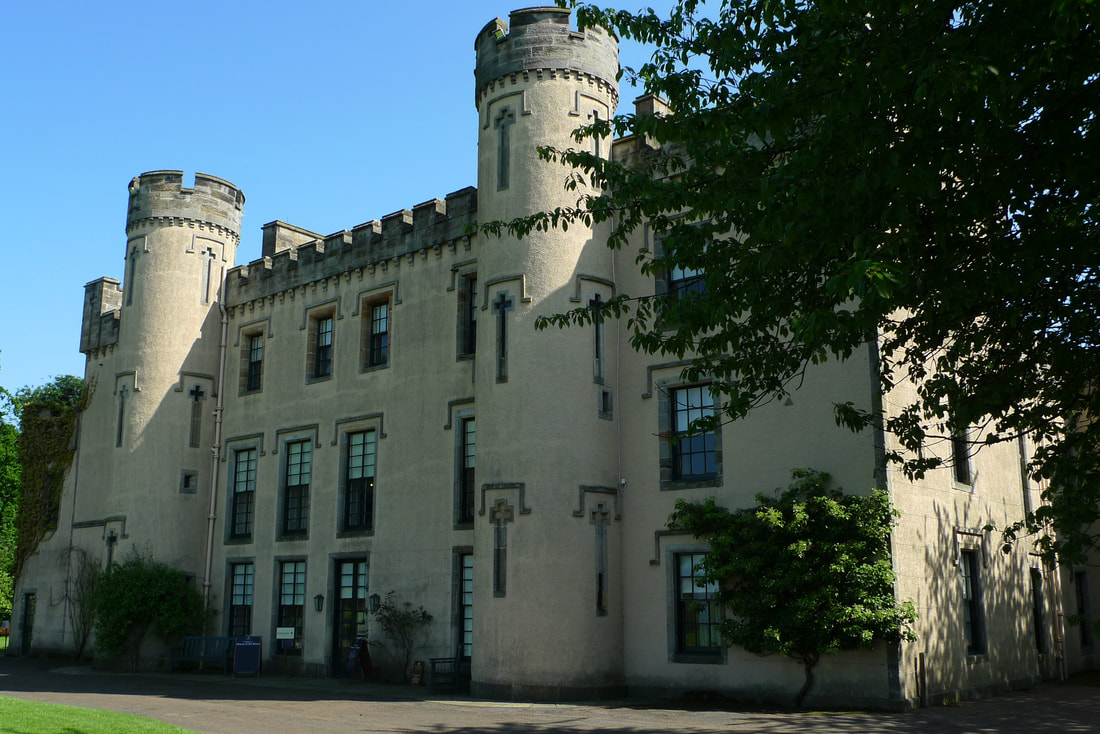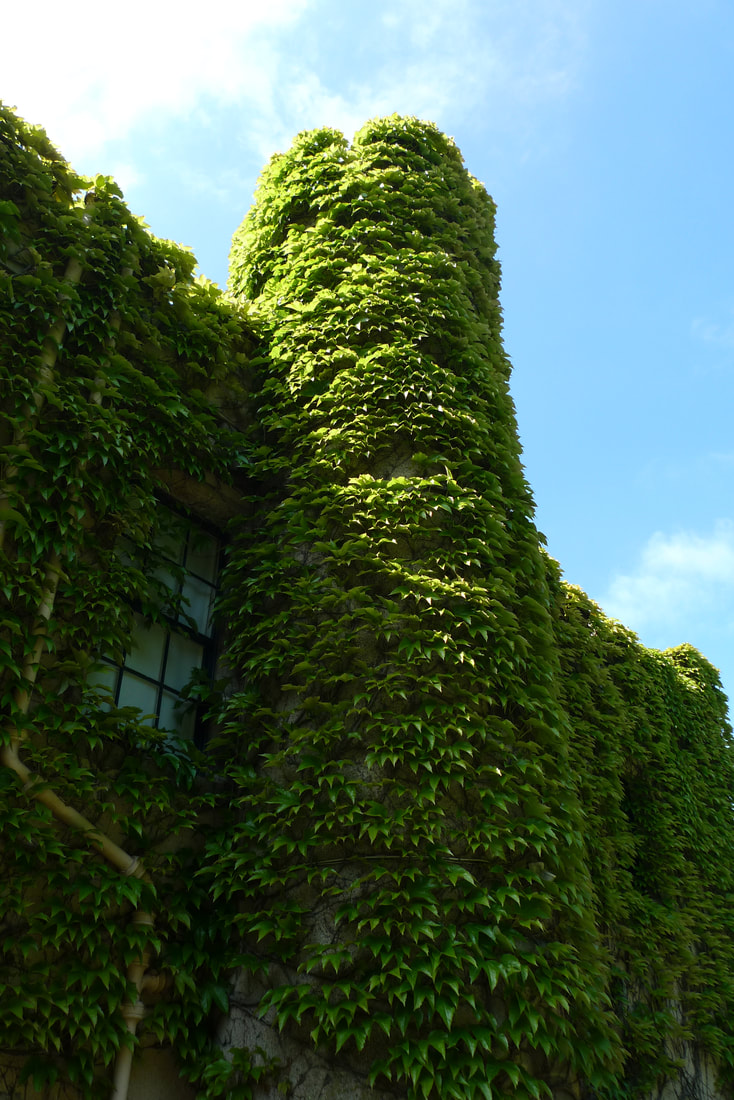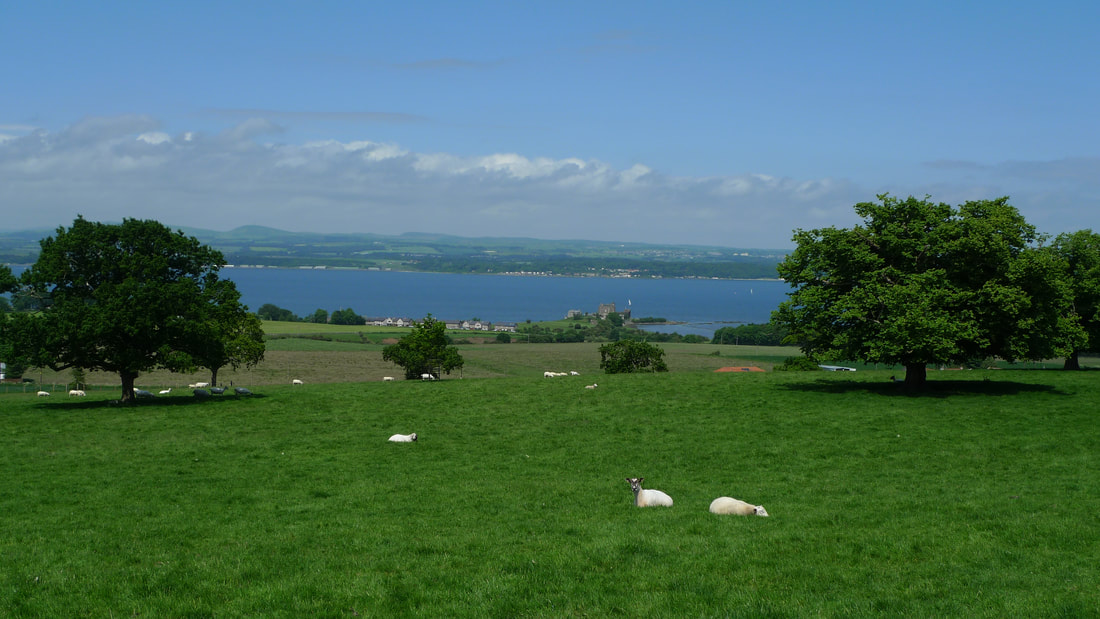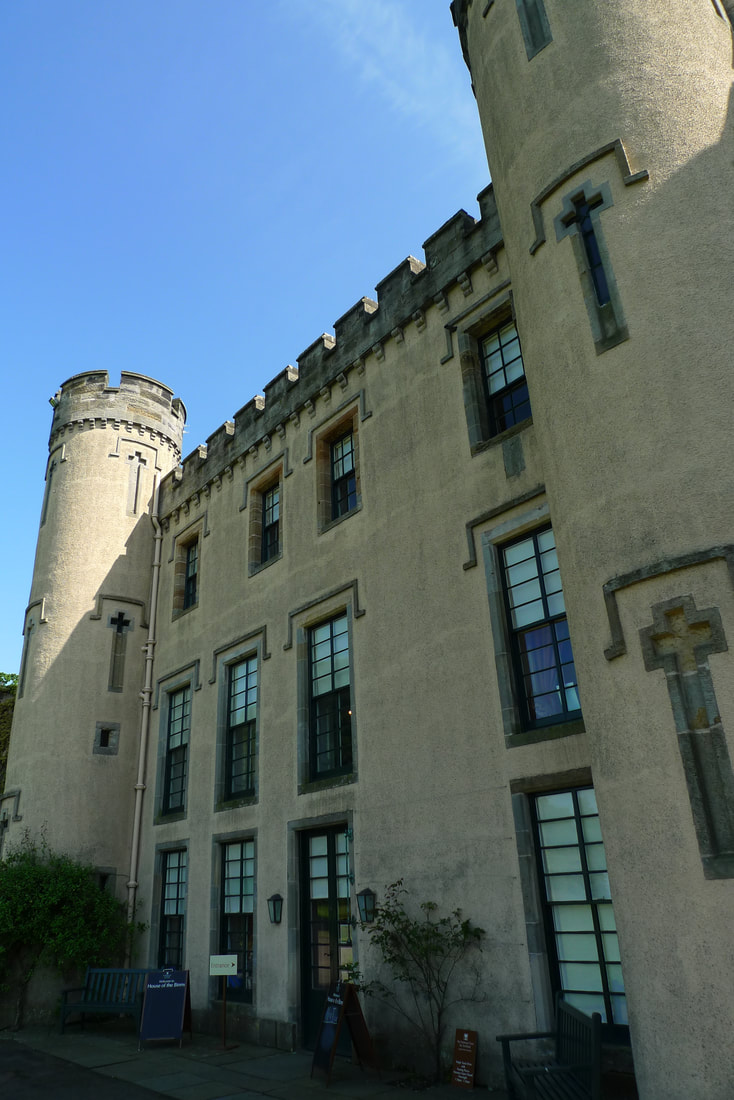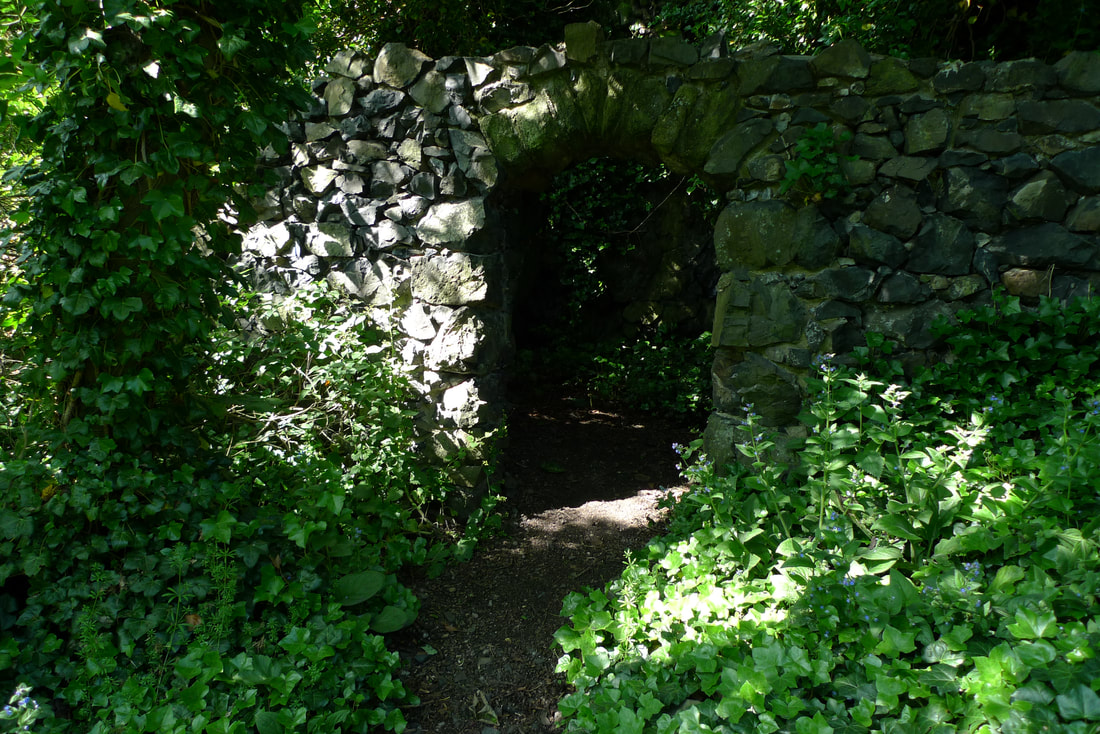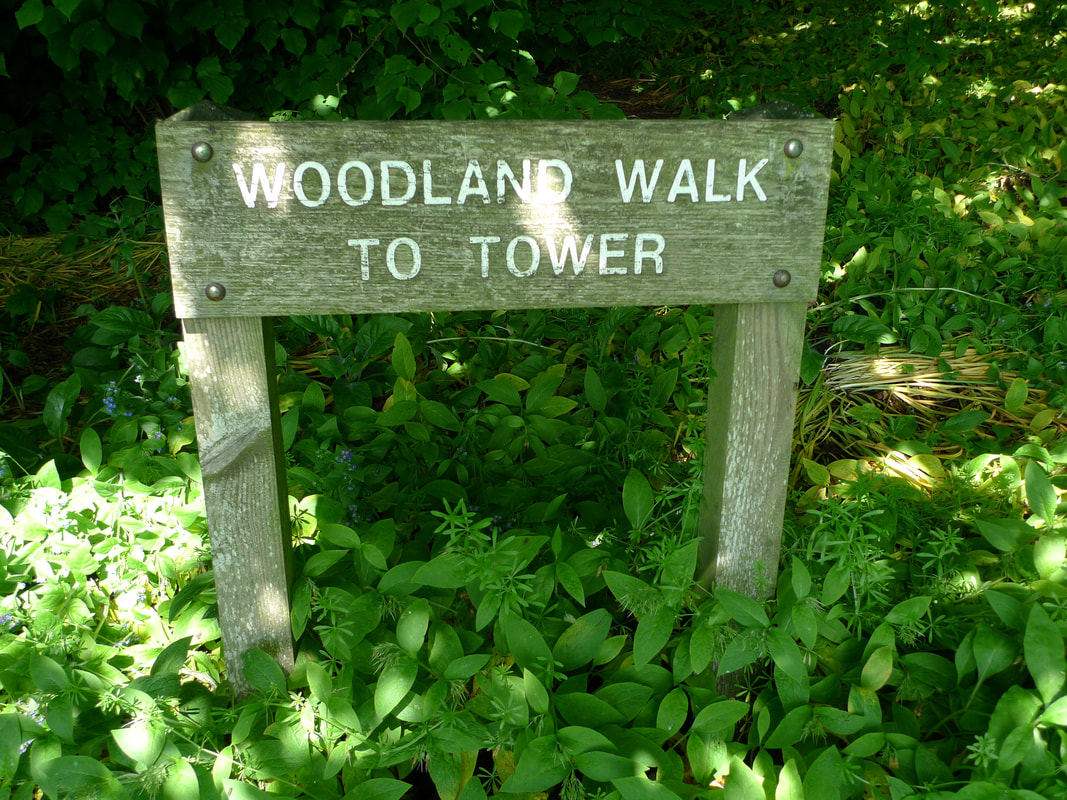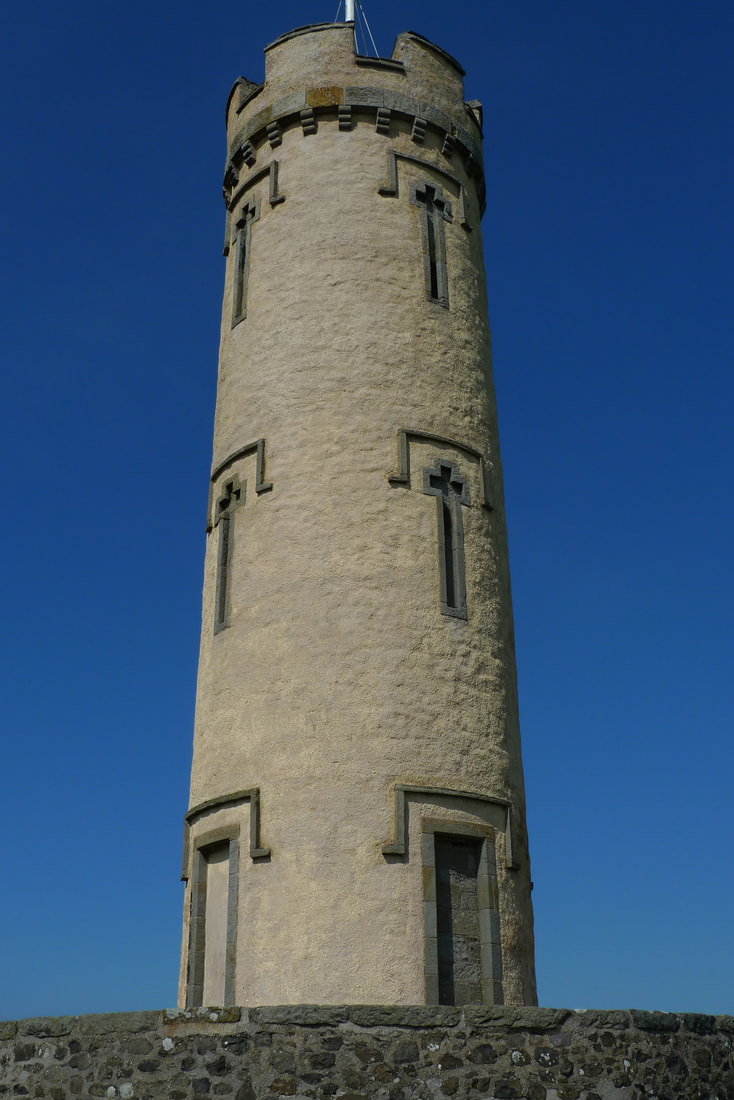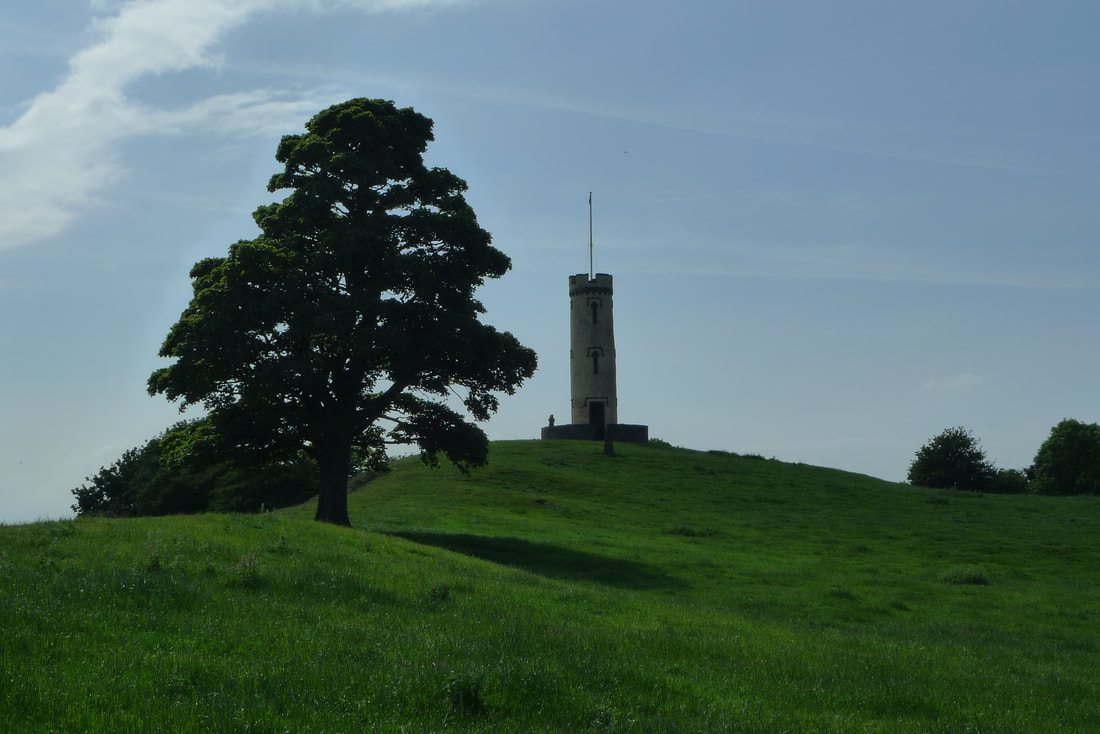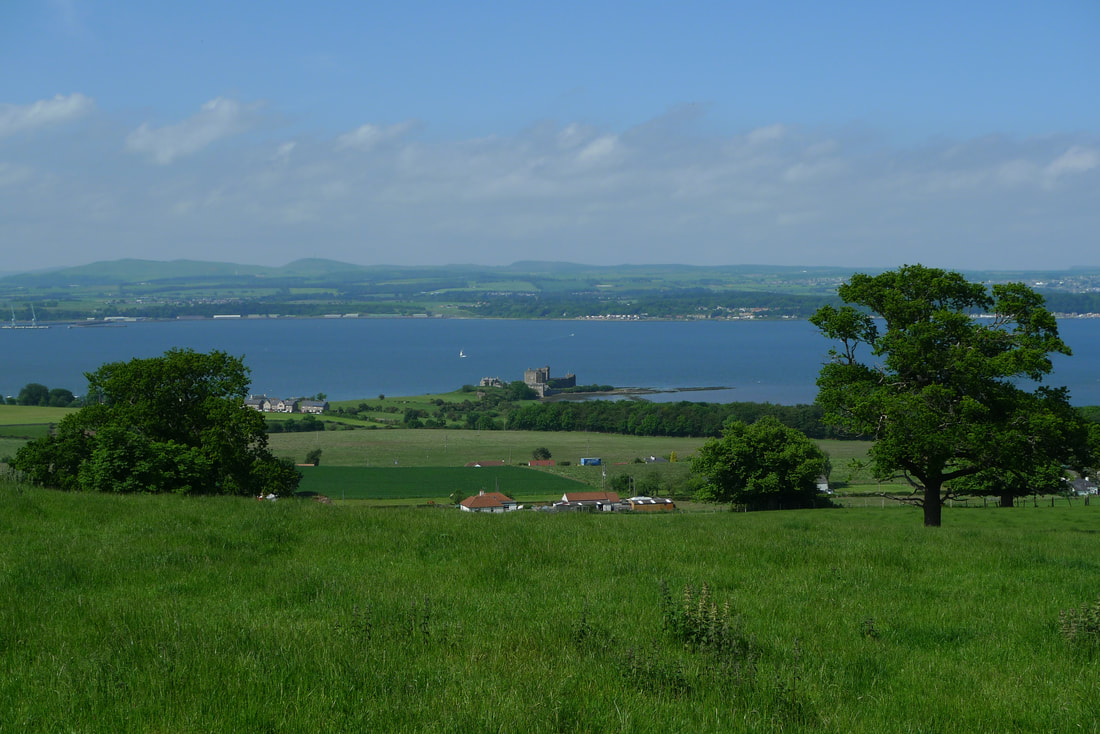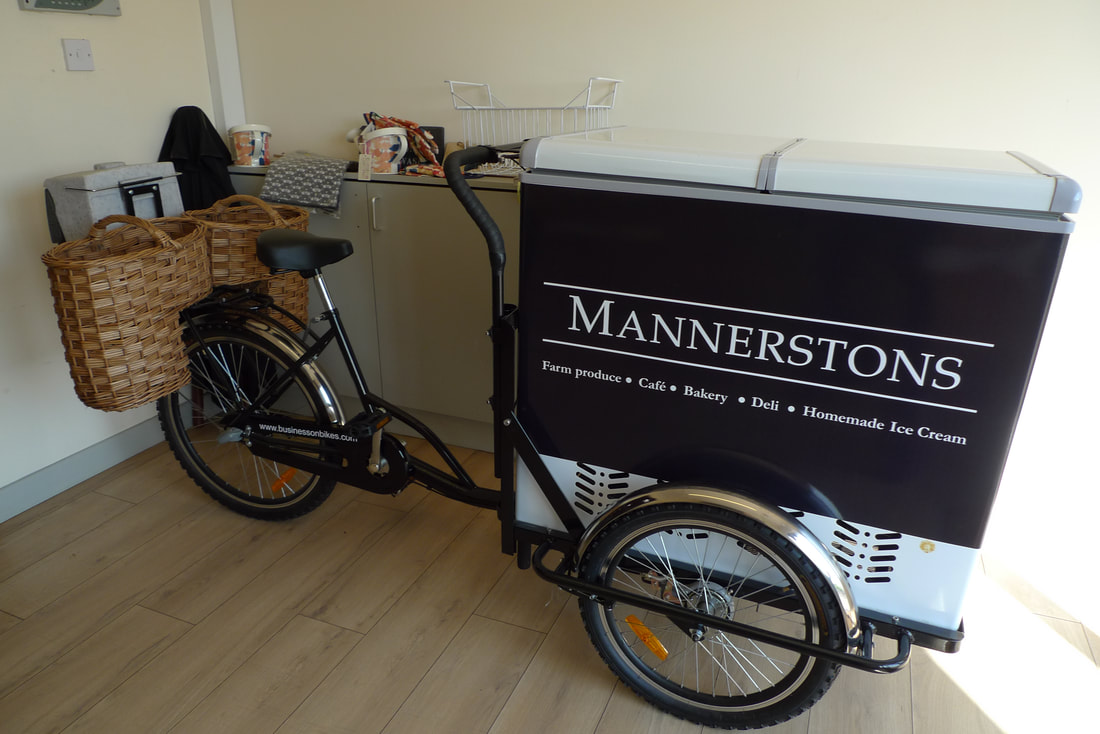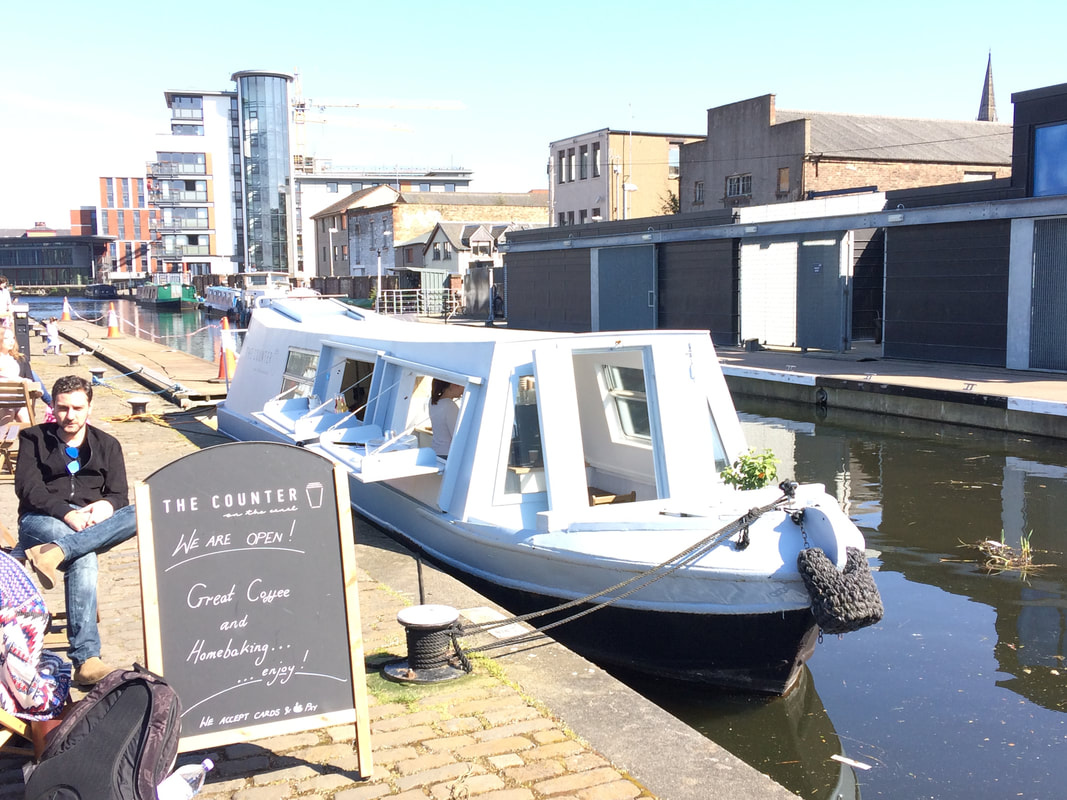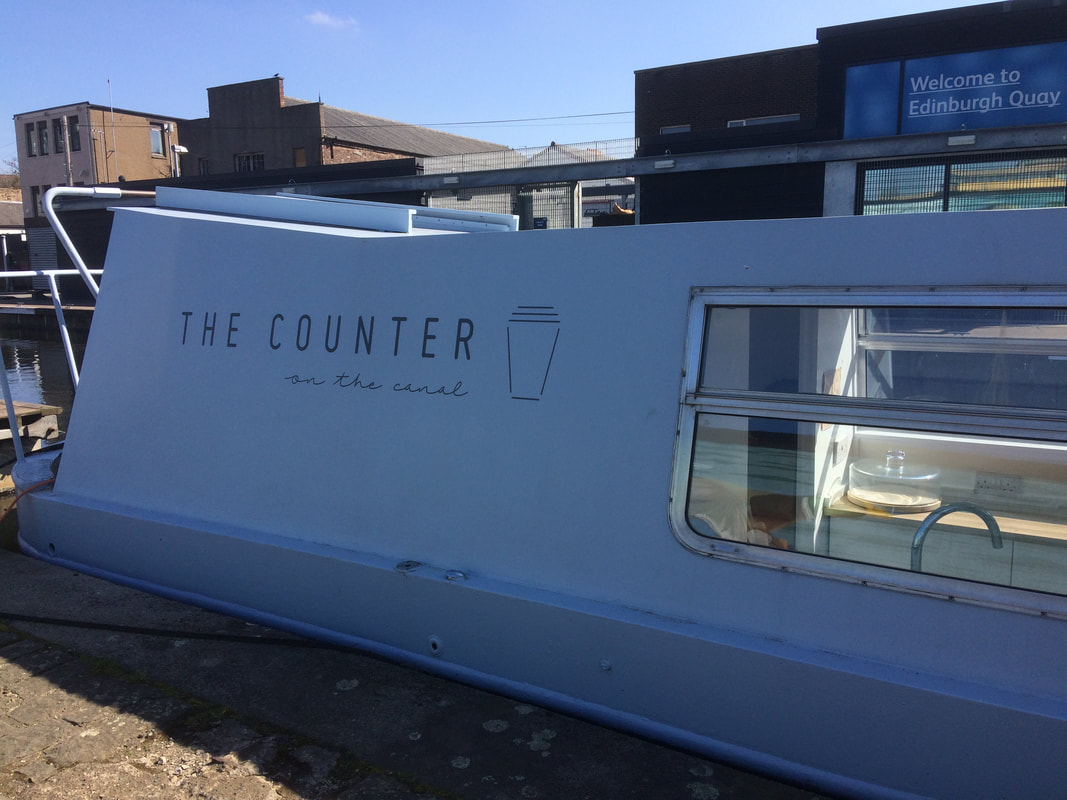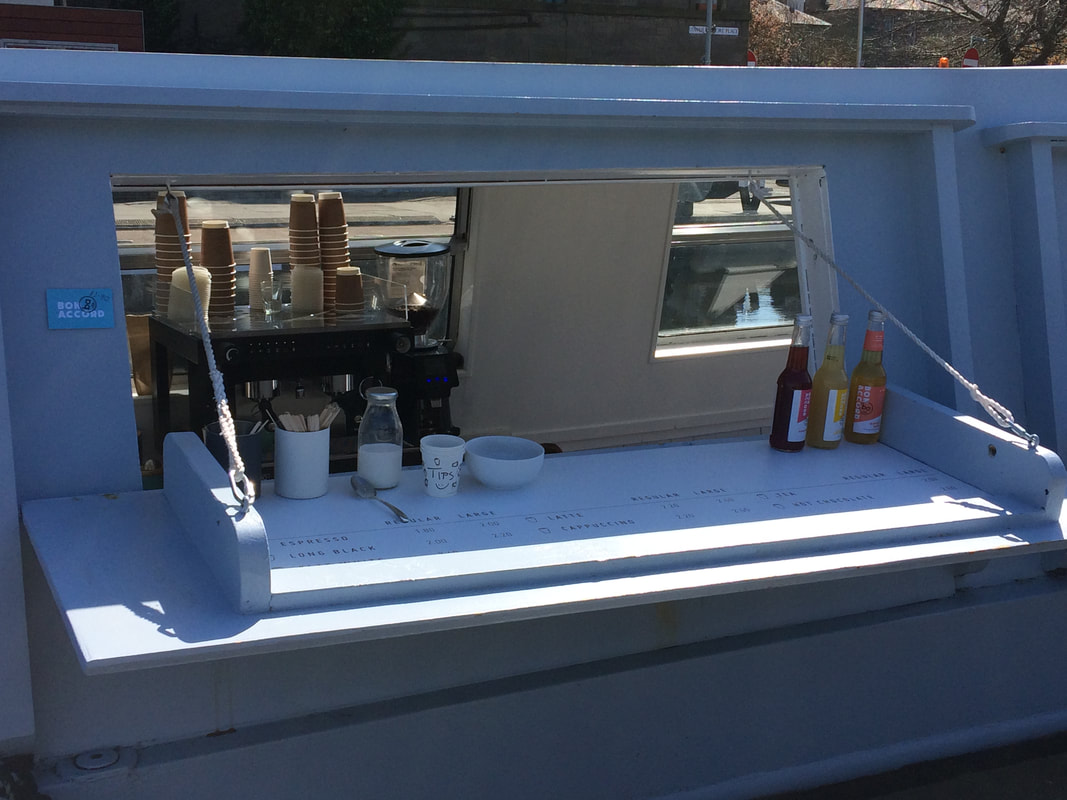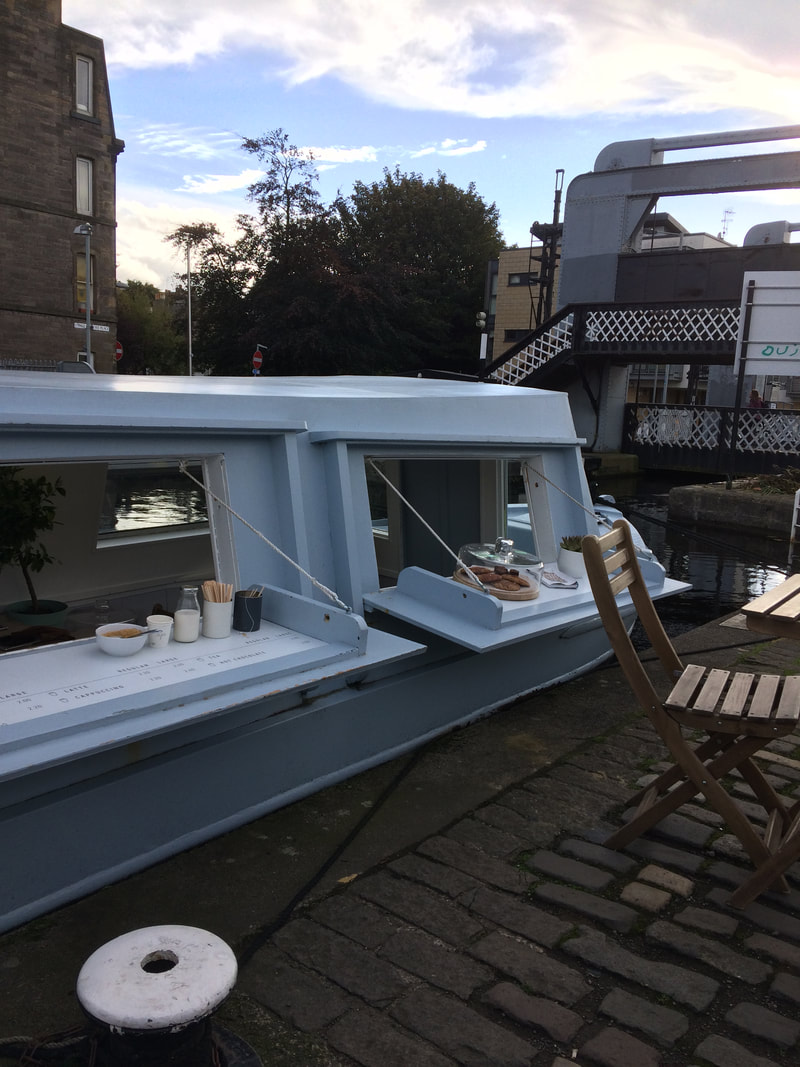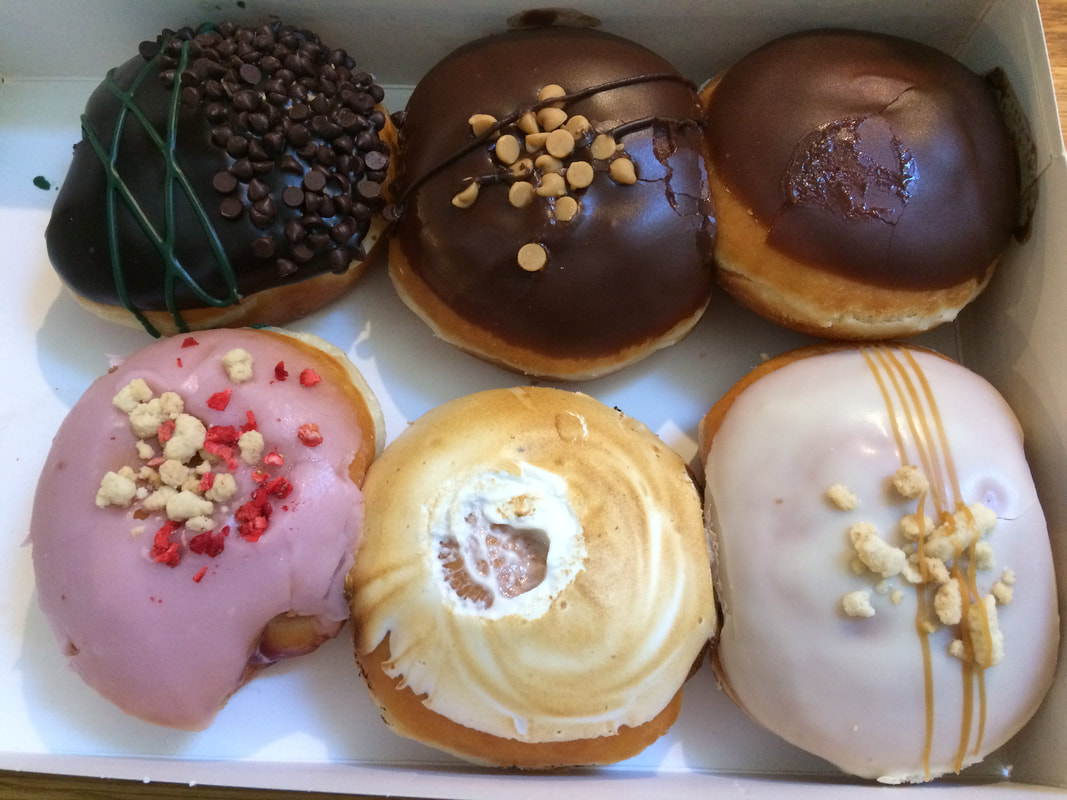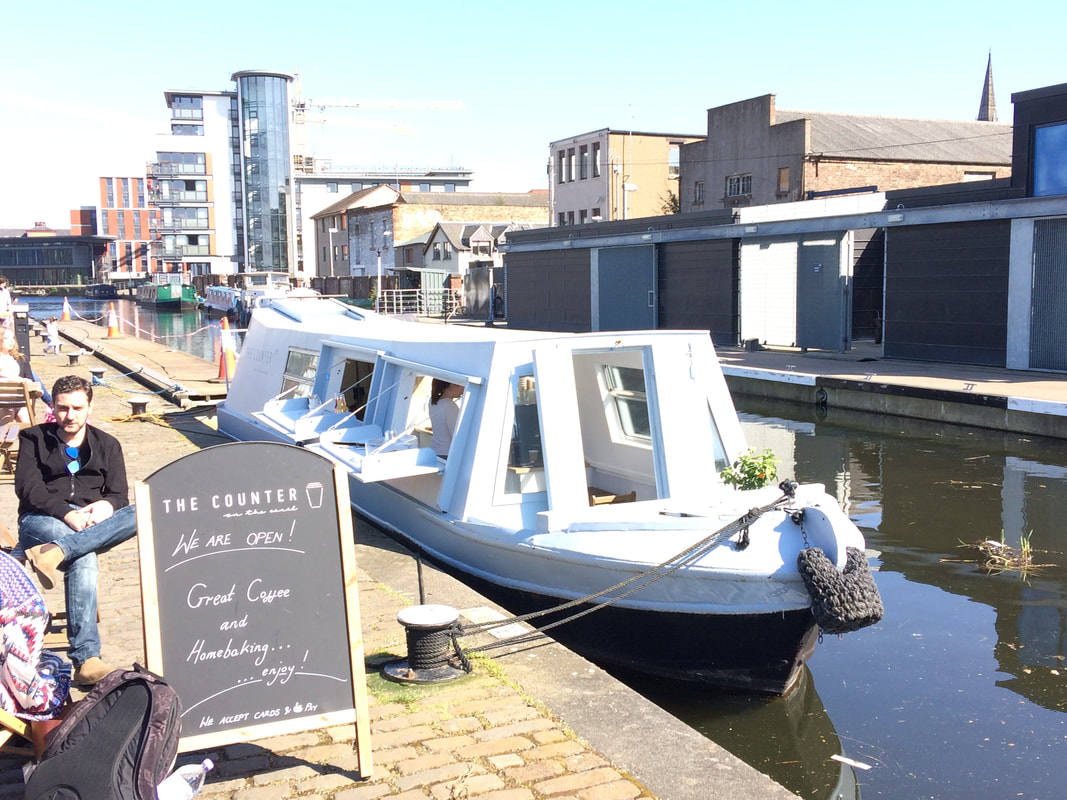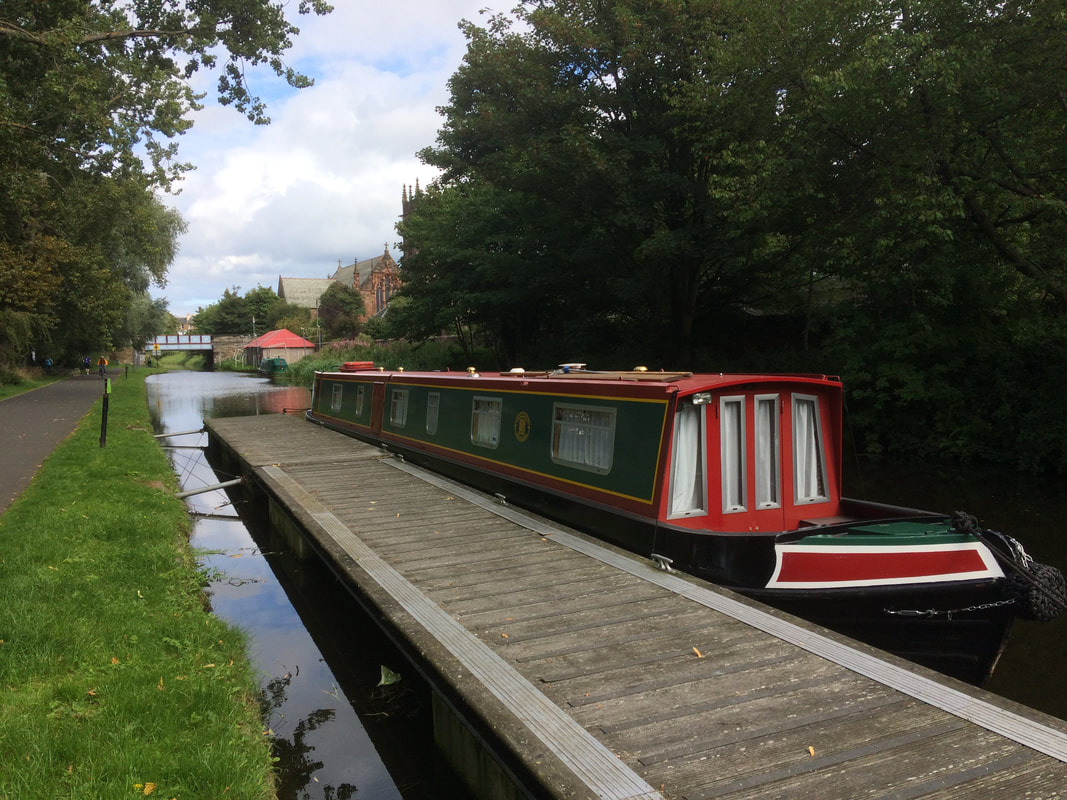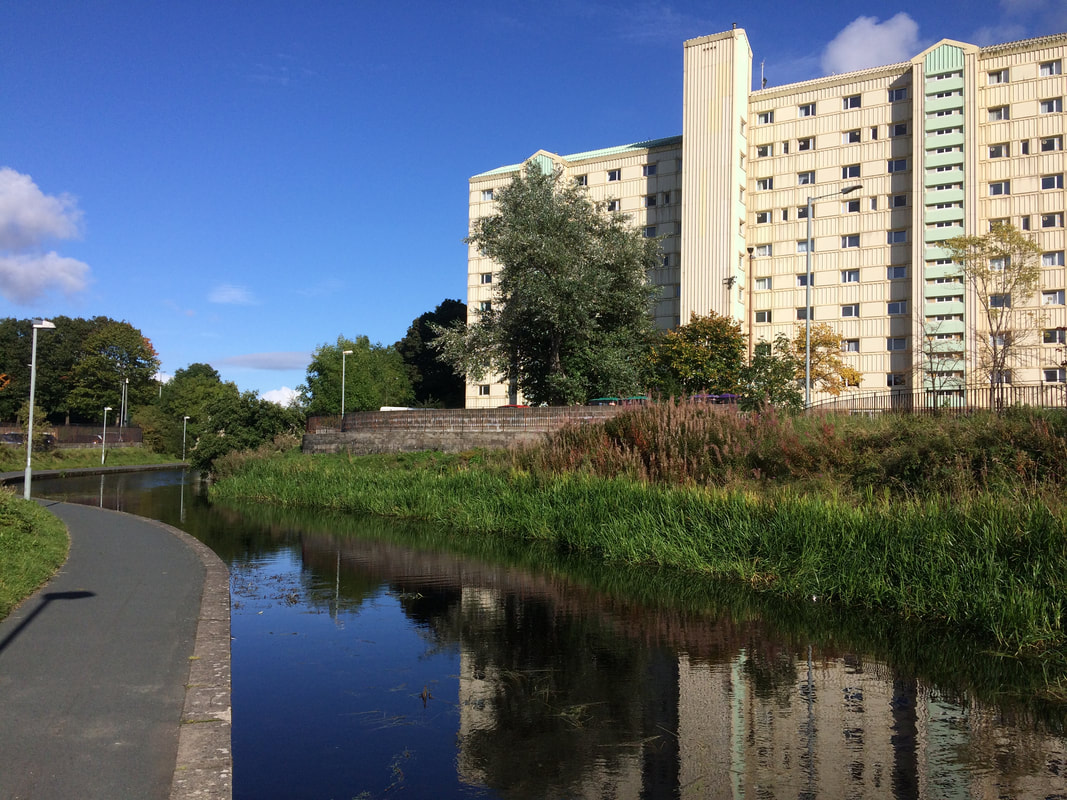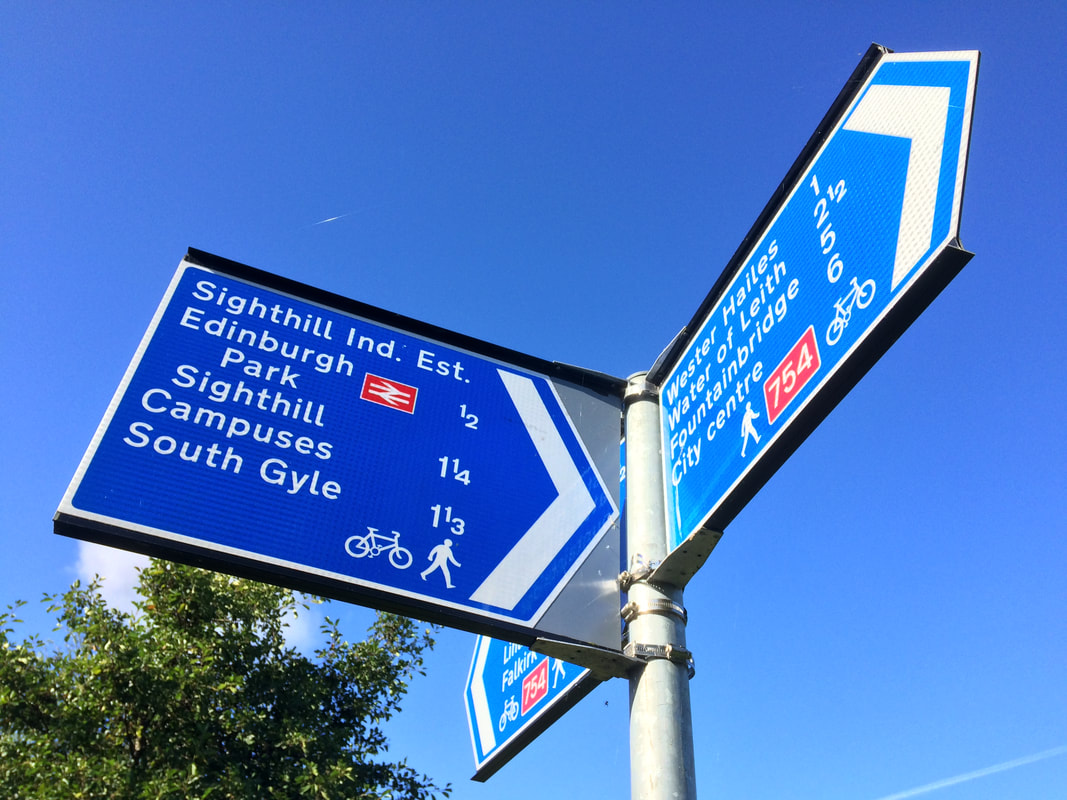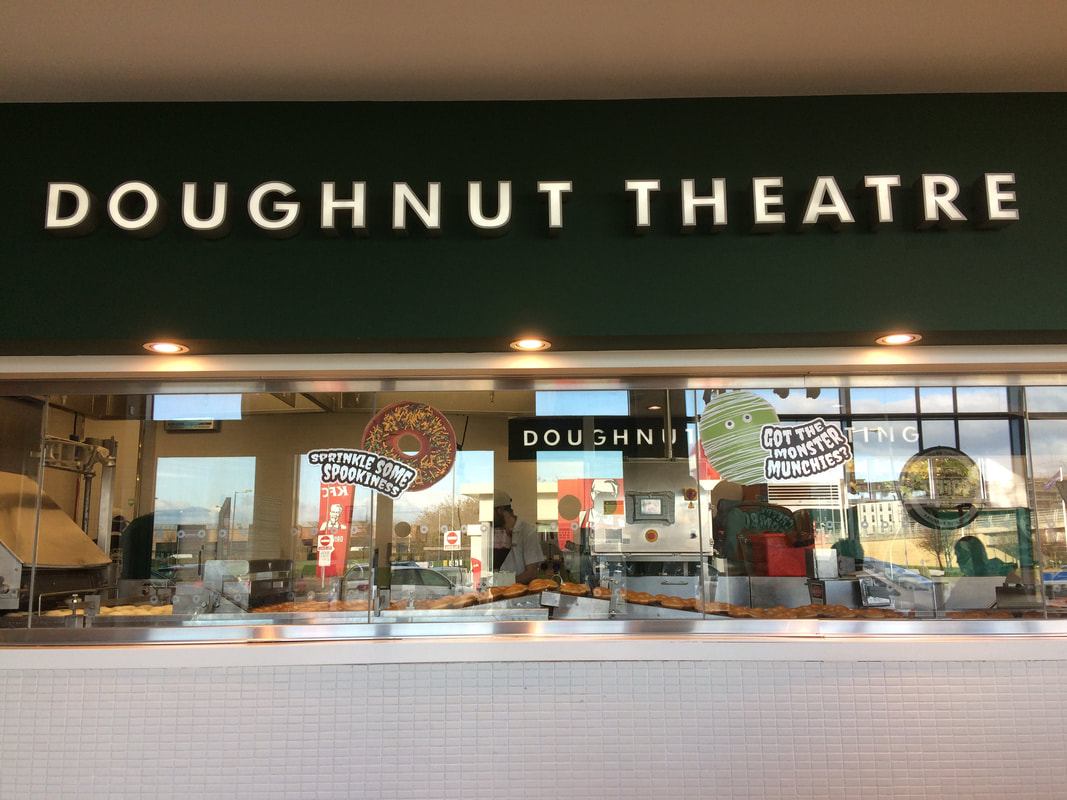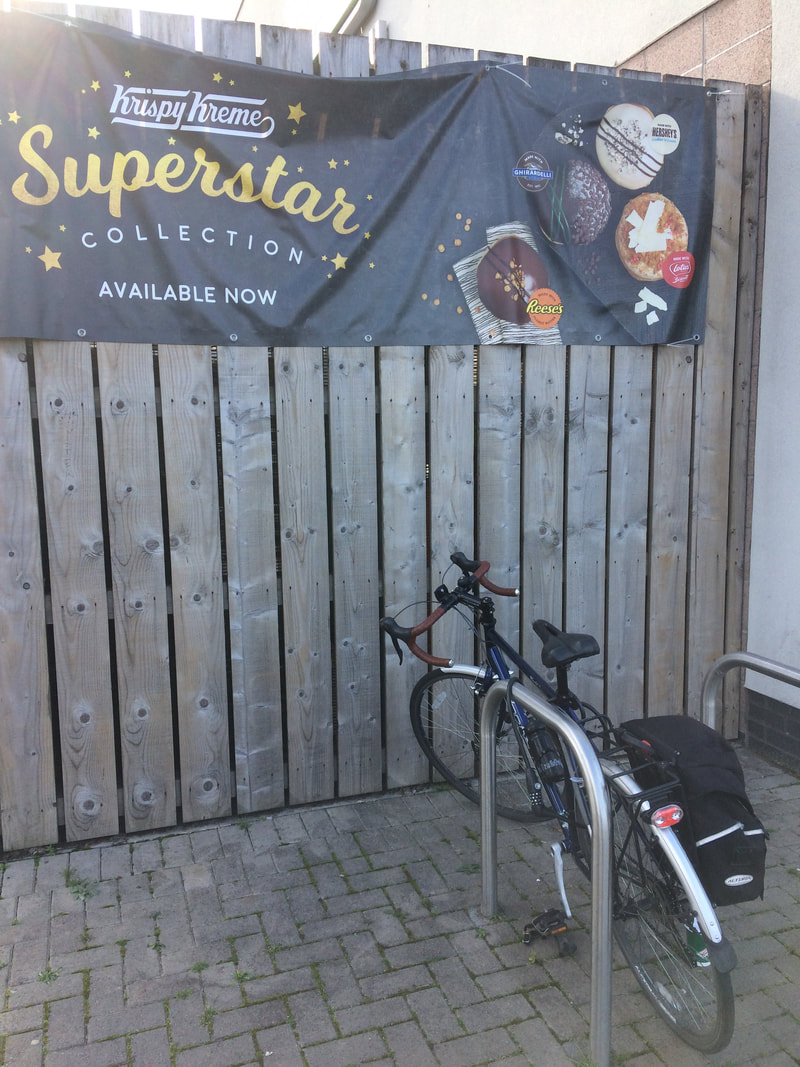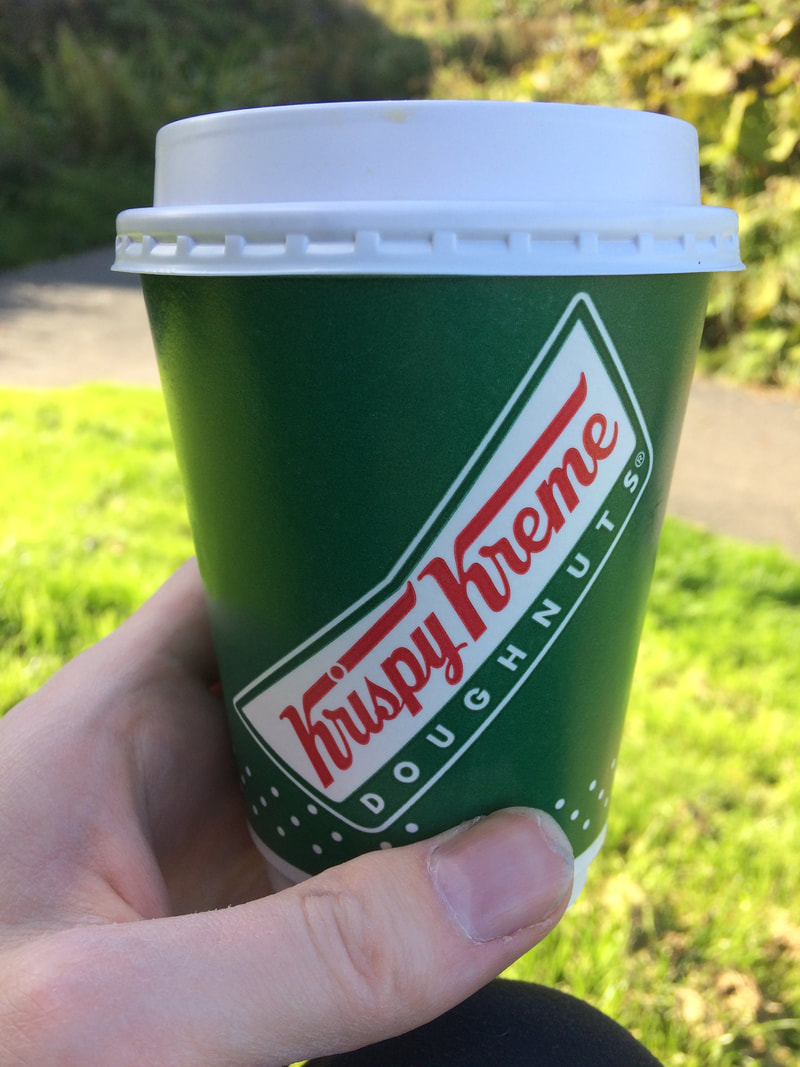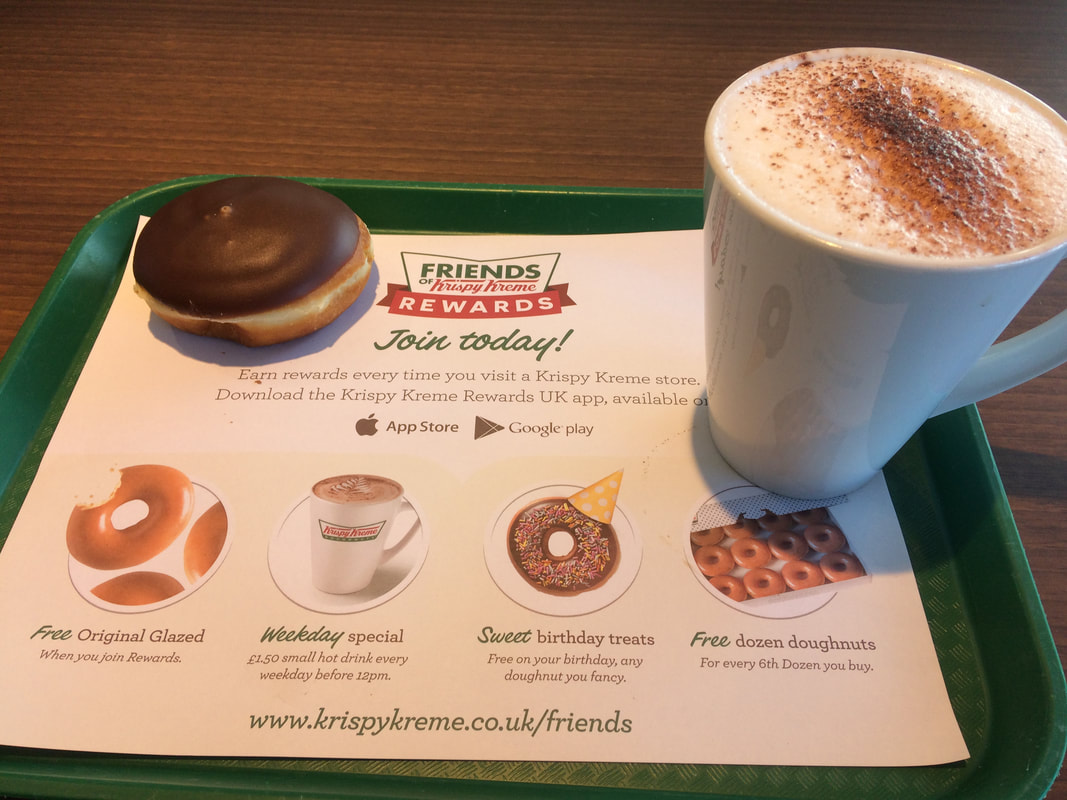|
The Union Canal path is one of Edinburgh's primary traffic-free cycle routes. It can be the ideal way to reach various parts of the city whilst avoiding motor traffic. However, I don't always use it because of a number of issues that I will discuss in this blog. These issues highlight why the Union Canal cannot always be a part of the solution to providing segregated cycling infrastructure for everyday journeys.
In a previous blog I wrote about my cycle commute using Colinton Road. The Union Canal path follows much of this road and it provides a traffic-free alternative, but I don't always find that it works for me and this is why: 1. Poor access onto the canal If you are lucky enough to live right next to, or very close to the canal path then its easy to get on it. My closest access point is via the disused railway path that travels through the famous Colinton Tunnel. This railway path goes through Colinton Dell, alongside the Water of Leith and is a beautiful place for a leisure bike ride. However, for most of the winter months it is a muddy mess that is difficult and inconvenient to cycle through, particularly if you need to get somewhere in good time and you really do not want your bike to be messed up by all that mud. I can use another access point just off Craiglockhart Road North and this avoids the muddy path. However, to get to Craiglockhart Road North you need to cycle on Colinton Road, which can be busy with traffic. You can avoid some of Colinton Road by taking the quieter roads through the housing streets of Craiglockhart, but it is convoluted, takes longer and it involves trying to cross over the busy Craiglockhart Avenue. Once you reach the canal access point you will find that there are steps. That's okay for some, but not everyone will manage to get their bike down these steps. 2. Slateford Viaduct If I do access the canal from the disused railway path I will come across one of the canal's main pinch points, the Slateford Viaduct. This has an extremely narrow cobblestone path. The signage here states that you should not cycle on it and walk across with your bike, although some people do cycle it. It is too narrow for people travelling in opposite directions to pass each other without one person coming to a complete stop and pulling right into the edge. There is always a feeling that someone is going to fall into the water. Crossing the viaduct a few times a year for a leisure trip along the canal can be a novelty, but for everyday cycling for commuting or other purposes it is inconvenient and slows down the journey time. 3. Blind spots when cycling under bridges When cycling on the Union Canal there are a large number of bridges that the path passes beneath. Many of these are pinch points with a blind spot that means you cannot see if there is another person approaching in the opposite direction. A collision is likely without the use of a bicycle bell. Not every person that uses the canal has a bell on their bike and some people might not hear it if they are listening to music. I slow right down at these bridges because of the risk of a collision, but I have seen many people on bicycles going too fast. The path under some of these bridges narrows and some have cobblestones which adds to the challenge of clearing these bridges safely. 4. The volume of people using the Canal path The closer you are to the city centre the busier the path can be. It is extremely popular with joggers, dog walkers, other bike riders, families and anybody who fancies getting out and about for fresh air. The path is very narrow in places and this can make it a challenge to get anywhere quickly on a bicycle. The right thing to do is to slow down on this path and respect the other users. The huge number of people that enjoy this space and the large number of people using it for cycling is a clear message that the city needs more spaces like this. Everyone is cramming onto the few traffic-free green spaces that we have in the city. 5. The fast cyclists I notice that there are some people using bicycles on the canal path that are in a rush and rarely slow down for anything. I guess they are using it for their commute and want to be able to go as fast as they would on a road. They will ring their bell and expect everyone else to move out of their path. If someone like this is behind me and I am taking precautions like slowing down at the bridges or slowing down for pedestrians I always feel that they are getting impatient. And if someone like this is travelling in the opposite direction I fear the possibility of a collision, particularly at the narrowest parts of the path. These are the reasons that I do not always use the canal path for my everyday journeys. I think it largely depends on where you live and where you are travelling to as to how useful and convenient the canal path is, and if you mind dealing with things like the bridges and cobbles. The Union Canal opened in 1822 and the purpose of the path was to allow horses to pull the boats along. It was never designed with cycle commuting in mind. It is wonderful to be able to travel by bicycle along this canal and I highly recommend it for leisure cycling. I feel fortunate to have the canal path as an outdoor space in my city. However, it cannot be depended upon as part of the plan to provide segregated cycling infrastructure for efficient, everyday journeys. How about you? Do you use the canal path for your everyday bicycle journeys? Leave me a comment below.
5 Comments
The Colinton Tunnel is one of the most spectacular features of Edinburgh's cycle network. Visit it on this 8 mile traffic-free route following the Union Canal path and a disused railway line. The route ends in Balerno where you can visit the walled garden of Malleny House.
Fountainbridge The route begins on the Union Canal which can be found on Fountainbridge- hidden behind glass office buildings is something like a mini Amsterdam with the colourful canal houseboats and alfresco dinning . There is even a canal boat serving coffee.
-The canal is a popular place for locals. It can be busy with pedestrians and cyclists and is very narrow in places, so it is not a place to go very fast.
Despite being in a city the canal path has a surprising countryside feel with plenty of trees, ducks and swans. Slateford Aqueduct After about 2 miles you will come to the Slateford Aqueduct. Although an impressive piece of engineering this is probably the most annoying part of the canal for cyclists. The narrow cobbled path makes it pretty impossible to cycle over and the signage instructs you to push your bike. Some cyclists still give it a go, but there is so little space for passing safely that I recommend just pushing the bike and once at the other end you will be able to pedal again.
Colinton Dell
After the aqueduct it's just two minutes more cycling until you reach the turn-off. It is quite easy to shoot past it, but just look for the blue directional signage. There are three signs on a pole and one of them points to Balerno and Colinton.
This takes you up and onto a bridge that crosses the canal and then the A70 Lanark Road to join a path that was once a railway line. Passenger trains ran on this line until 1943, goods trains continuing until 1967. It follows the Water of Leith and heads into Colinton Dell.
This is a special part of the city and it is worth parking up the bike and doing a bit of walking along the many trails that take you through the woods and alongside the water.
Colinton Tunnel- 3.7 miles from Fountainbridge
One of the most exciting parts of the route is cycling through the railway tunnel at Colinton. This used to be a gloomy experience, but it has been transformed into one of the most beautiful parts of Edinburgh's cycle network, thanks to the mural painted on every surface of the tunnel.
The theme of the mural is local history and heritage. You will see an otter swimming, a train pulling into a station packed with interesting characters, a horse and carriage racing by and much more. The mural is nearing completion, but still requires donations and if you wish to give something there are details on the tunnel website.
Spylaw Park
After the tunnel you come to Spylaw Park where there is a particularly striking grand house. This was the mansion of James Gillespie who made his fortune as a snuff merchant. He built the house in 1773 next to his snuff-mill and today it contains private flats.
The park is ideal for a picnic with a huge grass area, plenty of benches and a children's play park. Or head through the park to get up to The Spylaw, a country pub with stylish interior and a beer garden. If coffee is more your thing then Java Moment (not open weekends) on Bridge Road does an excellent cup.
"I kept always two books in my pocket, one to read, one to write in." Robert Louis Stevenson. His statue in Colinton village depicts him with two books. Colinton village is worth a wander, particularly down Spylaw Street with its idyllic cottages leading down to a bridge where you are surrounded by the sound of the Water of Leith rushing below. On the other side of the bridge there is the gorgeous Colinton Parish Church. This is also where you will find the Robert Louis Stevenson statue. The famous author visited Colinton as a boy and the statue depicts him as a boy with his dog, a skye terrier called 'Coolin'. There is a poetry trail around the village with panels containing verse from his work.
Mills and Railways
All along this route there had been a thriving milling industry- saw mills, paper mills, barley and grain mills. The railway serviced these mills and led to a housing boom along the line as the train made it easy to travel to Edinburgh. Passenger usage was so robust that in 1914 a normal train consisted of 8 coaches and this was increased to 13 on Saturdays. After the First World War the railway started to go into decline, largely as a result of competition from buses. Monuments to the area's industrial past are rare and what you will mostly find is trees, gently flowing water and the chance to spot wildlife. If you are lucky you might see deer, heron, badger and kingfisher.
Juniper Green cake stop
About one mile from Colinton is Juniper Green. For cake or lunch leave the cycle path to go into the village where you will find Molly's on Lanark Road. The traybakes are legendary with their toppings of thick chocolate and delicious flavours like orange Aero. The lunches and breakfast are also good and they have some outdoor seating for sunny days. There is an attached delicatessen where you can pick up fresh fruit and other interesting foods for the journey ahead.
Currie Conservation Village
An elegant church, with a clock tower, appears suddenly- it is quite a striking vision after seeing only trees and and glimpses of the Water of Leith for the last couple of miles. This is Currie Kirk (1784) and the little patch of cute cottages surrounding it is part of the conservation village. It is worth getting off the bike and having an explore around here.
Balerno
Once you reach the end of the route, at Balerno, it is marked with a metal sculpture set into the pathway that signifies the twisting route of the Water of Leith. At this point you emerge onto Bridge Road. Turn left here to reach the centre of Balerno and for Malleny Garden. It can be a busy road, although there is a cycle lane.
Main Street in Balerno contains a couple of pubs, a hairdresser and a pharmacy. It is a pretty street the way that it curves uphill and is lined with attractive stone buildings and bright flower boxes.
Malleny Garden
The garden is sign posted from Bridge Road. You will see the large sign as you cycle towards the centre of Balerno. Malleny House is not open to the public, but the gardens are in the care of the National Trust.
The entrance (admission fee) to the garden is through a small gate in the wall that has a bird, like a phoenix, incorporated into the ironwork. This is the Gore Brown Henderson crest, former owners of Malleny House. On the other side of the gate there is a coat of arms, representing the Rosebery family, also former owners of the house.
The gardens are small, but have many interesting features, including clipped yew trees planted in the 17th century, Victorian glasshouses and the largest rose collection in Scotland.
An interesting fact is that spring arrives up to 10 days later here than it does in the centre of Edinburgh. This is because the garden is north-facing and has an altitude of 170m.
Looking for other ideas of cycling routes from Edinburgh?
Why not try the route to Musselburgh? It is also mostly traffic-free.
This incredible underground world can be found on the Union Canal, right next to Falkirk High train station. It's a tunnel with a special atmosphere thanks to the lighting, the cave-like structure and a fascinating history that includes Burke and Hare.
Getting here If you cycle around 25 miles along the Union Canal from Edinburgh you will arrive at the Falkirk Tunnel. Or you can take a train to Falkirk High and from the south platform it is just a five minute walk. What's it like to visit? This is so much more than just a tunnel. It feels like a cave with the rough natural stone interior that was blasted out by navvies around 200 years ago. There is a hint of Bond villain lair- you can almost imagine patrol boats with armed guards cruising by. The walls glisten with trickling water and a hole in the roof has a continuous stream pouring through it.
The canal was meant to be an overland route, but the owner of Callendar House, William Forbes, said it would ruin his view so successfully campaigned to have it diverted under Prospect Hill. Construction of the tunnel took place between 1818 and 1822.
It is 630 meters long and can be a challenge to cycle through as the towpath is cobbled, slippery, has puddles and is only 5 feet wide. Pushing your bike through it can give you more time to appreciate the unique environment of the tunnel.
When the tunnel first opened there was such a thing as passenger canal boats. Some people were afraid to travel through the tunnel so horse transport was provided so that they could get off the boat and meet it at the other end.
I can understand why they did not want to go through the tunnel. Moving from daylight and pleasant countryside into a dark cave-like structure is disconcerting. Although the lighting is much improved today it still feels dark and the roof is low. Plus there is a spooky association with Burke and Hare, the murderers who stalked people in early-1800s Edinburgh, killed them and sold them to the anatomy school. The two men had moved from Ireland to Scotland to work on the canal and the construction of the tunnel.
The tunnel really is worth a visit. I just loved the stark contrast between the bright and bucolic surroundings at the mouth of the tunnel and the mysterious, dark world that you step into. It's not one of Scotland's most obvious attractions, but you will not be disappointed if you put this on your itinerary.
Enjoy a fascinating guided tour of this still lived-in National Trust Property followed by a walk in the grounds to the tower and views across the River Forth. At less than a 5 mile cycle from Linlithgow, mainly along the scenic Union Canal, this is an easy day out from central Scotland.
Highlights of this Cycle Route
Take a train to Linlithgow and start cycling along the canal Linlithgow is only 20 minutes from Edinburgh, 30 minutes from Glasgow. At the station take a moment to notice the top of the columns holding up the station's canopy. There is impressive decorative ironwork with three dimensional flowers. The canal is just one minute from the station.
There is a good chance of seeing lots of canal boats, particularly if you take a closer look at the Linlithgow Canal Centre which offers boat trips, a museum and a tearoom.
Once on the canal you turn left and cycle for 3 miles. This path is not the smoothest you will cycle on as it is composed of gravel with quite large stones. It is also very narrow and in the summer the vegetation is very lush and overgrown, so you will need to slow down whenever another cyclists or pedestrian is passing in the other direction. Saying that, it is also very pleasant and enjoyable to potter along here.
You are looking for a path that branches away from the canal at Philipstoun and takes you through a small housing estate. You emerge onto a minor country road with minimal traffic that leads you under the railway and then over the M8 motorway.
This country road deposits you on the A904 where you turn right to reach the entrance to the House of the Binns. This road can have steady traffic, so you need to be reasonably confident to ride it, but you are only on it for about 300 meters. If you don't feel up to it you could push your bike along the verge.
The Pink House
The house is really unusual with its pink colour and castle turrets. I thought that it looked like a modern replica of a castle, like something you might find in a theme park, so I was surprised to discover that it was built in the seventeenth century. When I pulled up in front of the house I was greeted by none other than Tam Dalyell, former Member of Parliament and one of Scotland's longest serving MPs. Sadly he passed away in January 2017 and House of the Binns was his home. There is a unique arrangement with the National Trust that the building passed to their care on condition that the family was still able to live there.
Tam was wearing a white cable-knit jumper and pushed around a walker with a copy of The Times on it. He asked where I was from and how I travelled to the house, "Yes, my son used to cycle to Linlithgow everyday," he told me.
He greeted some more visitors and on discovering they were from China told them about his time in the country during the Cultural Revolution. The views from the front of the house are magnificent with green fields descending towards the expansive blue of the Forth.
Books and Beards
Visits to the house are by guided tour and photography is not permitted. My guide was passionate about the house and was excellent at painting an idylic picture of life in this house. In the Blue Room she said, "you can imagine this being very cosy with the fire on and reading a book." There are books everywhere in this house. Not just old books, but modern titles that add to lived-in feeling of the house. There is even a 'book balcony', a narrow corridor lined with cases of beautifully bound tomes. We were shown a bedroom that was especially made for Charles I, who never actually visited. It has a spectacular plaster ceiling with thistles, vines and fruits. The guide asked the tour group, "wouldn't you just love to spend a night here and be brought breakfast on a trolley, sit on the window seat and look out at the view... I think you can tell I have dillusions of gradeur!" The most colourful character in the story of the house is General Tam Dalyell (1615 to 1685). There is a portrait of him with an enormous beard and long hair. He vowed never to cut his beard until a Stuart monarch was restored to a throne. "You can imagine it must have been trailing to the floor," Our guide smiled.
In the dining room there is a display case with the biggest comb you have ever seen. This was for Tam's long beard! There is also a sword given to Tam by the Tsar of Russia as he served in the Russian army with distinction. I noticed many Russian things in the house, such as painted eggs, boxes of chocolates and vodka.
General Tam noticed that Russian soldiers had white uniforms to camouflage them in the snow. The concept of camouflage had not yet been developed by the British Army so when Tam founded his regiment, the Royal Scots Greys, he designed a grey uniform so that the soldiers would disappear into the mist of the Pentland Hills. In the grounds there is a stone structure where General Tam used to go for a quiet smoke, to be alone and think things over. Perhaps this is where he came up with the uniform design for the Scots Greys.
The Mouse Hunter
As our tour group made its way around the house I was surprised by how small the rooms are. You expect huge, grand rooms in stately homes, but House of the Binns is the exception and it gives the place a homely feel. I noticed chessboards all over the house and the guide informed us that the family loved to play and you could easily imagine them sitting on the sofas to start a game because the house feels like a home and not a museum. One of the best things about visiting National Trust properties is learning surprising things about the way people used to live. In the bake house the guide pointed out a small window, little more than a slit. She said this was for owls to fly in and eat any "nasties." It was an ingenious form of natural pest control. I loved that! The grounds of the house are fun to explore. A walk through the woods emerges to a hillside overlooking fields of sheep and cattle. Down below Blackness Castle is on a promontory with the expanse of the deep blue Forth stretching across to Fife. The world famous Forth rail and road bridges can be seen.
The M8 motorway can be seen and heard up here; a reminder how busy this part of Scotland can be. However, this spot is proof that there are places in the central belt that feel remote and peaceful. I wonder how many of those drivers rushing to Glasgow or Edinburgh know that this is here. They will notice the tower on top of the hill because it can be seen for miles. I always wondered what it was when I was on the motorway or the railway and now I know.
The tower is simply a folly, the kind of thing that owners of grand houses built as amusing landmarks in their grounds.
Cake Time
There is no cafe at House of the Binns, but there is a good place nearby. Mannerstons farm shop and cafe is a couple of minutes cycling on the A904. This is a popular place where you can buy vegetables, fruit, cheese, meats eggs, jams and other farm produce. They also do a fine selection of homemade ice cream. The cafe provides tastyhome baking and I can recommend the Victoria sponge cake. There is outdoor seating to make use of on sunny days. Make sure you don't miss their delivery bicycle parked in the entrance way.
House of the Binns is located in the West Lothian council region of Scotland. The area is easy to reach from both Glasgow and Edinburgh. You can find out more on the Visit West Lothian website.
The Union Canal is a great place to go for a bike ride. The path alongside the canal is traffic-free, starts in the city centre and takes you into the countryside. When its time for coffee why not stop at The Counter where your cappuccino is steamed and foamed onboard a canal boat?
The Counter is located near the start of the canal at Fountainbridge in Edinburgh city centre. The converted pale blue canal boat really stands out and is a welcome addition to an area of the city that is looking more and more exciting and attractive.
The windows of the canal boat have been converted into serving hatches. I like how the drinks menu is printed onto the hatch so that it is right in front of you when you make your order. The coffee is high quality, sourced from local roasters, Mr Eion of Stockbridge. There is also hot chocolate, tea and some bottled juices. Drinks are served in biodegradable cups. Homemade cookies and brownies keep the sweet toothed happy.
There are no seats inside the boat, but tables outside provide a nice spot when the weather is good. In fact, it is delightful to sit here in the sun for a while. You are right next to the historic Leamington Lift Bridge. This is an impressive piece of engineering that can be raised up to allow boats to pass beneath. You might just be lucky enough to see it in action during your coffee break.
What could be more delightful than watching canal boats glide by as you drink great coffee in the sunshine?
For doughnut lovers it is hard to beat Krispy Kreme, so why not take a bicycle trip to doughnut heaven? The Edinburgh stores are located in retail parks that are predominately designed for car users, but the good news is that you can easily cycle to the Edinburgh store at Hermiston Gait.
Yes, Krispy Kreme is an American, not a Scottish product. But they taste great, regardless of where their HQ is. And, yes, doughnuts are not exactly healthy, but what is the harm in the odd treat? And if you are cycling there you are burning some calories. You might be thinking 'why is he not writing about cycling to some beautiful scenic part of Scotland instead of a doughnut shop in a retail park?', but the point is to demonstrate that it is possible to reach everyday destinations using a bicycle. If we are to truly encourage more people to switch from car to bicycle I think it is important to show that it is possible to safely reach city locations using a bike. Google Maps revealed that it would take 30 minutes by bus, but 25 minutes to cycle to Krispy Kreme. Car journey time was about 15 minutes, but this depends on traffic, which is notoriously horrendous in Edinburgh. I was very surprised because I had assumed that it would be a no-go area for bicycles because of busy roads, but it turns out that the cycle route is mostly traffic-free. Well, I never! It's all about the Union Canal The key to the success of this route is the Union Canal path, which is totally traffic-free. It takes you almost all of the way to Krispy Kreme with the exception of some short on-road sections.
The other great thing about using the Union Canal is that it is beautiful and way more scenic than the bus route or driving the main roads.
How to get onto the Union Canal My map shows two ways to get to the canal: 1. From the city centre. From the Meadows you can follow the traffic-free cycle paths through this majestic green space to Bruntsfield where the cycle path ends opposite Leamington Terrace, a low-traffic road, that leads directly downhill to the Union Canal. 2. From Morningisde. Take any of the roads that lead you onto Colinton Road. Now, you cannot get away from the fact that Colinton Road is steady with traffic, but not scarily so. If you have a bit of experience on roads you shouldn't find this too bad. You will arrive at a junction where 5 roads converge. You turn right here onto Gray's Loan, which takes you to the canal.
If you arrive onto the canal via Leamington Terrace or Fountainbridge you will notice a cute canal boat cafe called The Counter. This is a great place to enjoy canal life with a quality coffee. You can read more about it in a previous blog post.
The canal is a fascinating ribbon of greenery that can feel very remote in places, but is actually just meters from built-up urban areas.
It is the kind of place where it is normal to have a number 3 bus, heading towards the city centre, pass you on one side at the same time as a canal boat chugs by on the other side.
I stopped to watch some ducks paddling in the water. Later a magpie crouched down on the path, a short distance ahead, ready to spring up into flight. He left it to the very last few seconds before I reached him. I caught a glance of a rat scurrying into the undergrowth. London-bound express trains sped by on adjacent tracks and even cross over the canal on a bridge. I wonder if their passengers even notice the canal.
Apartments and Aqueducts
There is an interesting mix of properties alongside the canal. There are high-rise flats dating from a time when the canal was not considered such an attractive asset. And more recent apartment complexes with balconies, aimed at attracting first-time buyers to canal-side living. You very quickly move from patches of this high density housing into areas thick with trees that shield you from any sign of the city and trick you into feeling you have hit the countryside.
There is one part of the canal path where it is essential to get off the bike and walk. This is the Slateford Aqueduct, which carries the canal over the Water of Leith. It is simply too narrow and the surface too bumpy to even contemplate cycling over it. This forces people to make way for each other. This can result in pleasant exchanges, eye contact and smiles with some people as it is necessary to squeeze past anybody coming the opposite way.
It Takes Every Kind Of People
You come across all sorts of people making use of the Union Canal. In terms of cyclists it was mostly the leisure cyclist that I spotted- people wearing casual clothing, most without helmets. The canal is seen as a safe place to ride a bike. There were plenty of dog walkers, joggers and people using the canal to simply get about. At one point I came across a group of people relaxing after a kyak trip. They were having a barbecue at picnic benches and just yards away from them a group of alcoholics were quietly sipping cans of super strength lager. As I overtook pedestrians I caught snippets of conversation. This from a woman to her male companion: "Well I didn't know I was going to need to bring a clean set of underwear with me." Then a group of young lads discussing a mutual acquaintance: "Aye, but he's a good c**t" Time to come off the canal and get some doughnut It is time to leave the canal when you spot this blue sign pointing to 'Sighthill Ind. Est.'
You turn left onto Cultins Road, a dull location of car showrooms and industrial units. It is not busy with traffic, so is fine to cycle and it is downhill so fun to freewheel. It looks like at least some of the pavement on this road is marked as shared cycle and pedestrian use, so you could avoid the road.
At the bottom of the road you turn left and pass Edinburgh Park train and tram station. There are cycle lanes marked on the pavements and I advise getting onto these in preperation for the roundabout that you must cross to reach the doughnuts. Using the cycle lanes on the pavement means you can avoid negotiating the roundabout. Cycling into the car park that surrounds Krispy Kreme is tricky to say the least. It is designed to function as a 'drive-thru' for cars coming, so all of the road markings fulfill this and there isn't an easy route for cyclists or pedestrians. I ended up dismounting on the pavement and pushing the bike across. There is no shame in doing this. If it looks too dodgy to tackle a bit of road on the bike I always just get off and walk it. Guess what? Krispy Kreme have cycle racks. Amazing. I think it is brilliant that they thought to put these in. Inside the shop there is a huge window, with the words 'doughnut theater' above it, where you can observe the doughnut production line. The atmosphere is fun with pop music, smiling staff and during my visit there were lots of families sitting-in. It is the combination of fluffy dough and inspiring flavours that makes these doughnuts so special. Just read this description of their lotus white chocolate and raspberry flavour to see what I mean: 'A raspberry jam & kreme filling infused with Lotus Biscoff, dipped in white chocolate & topped with Biscoff crumb, white chocolate & raspberry pieces.'
I felt great at having successfully arrived here by bicycle. I don't think I would get the same feeling of excitement and satisfaction if I had driven or taken the bus. I had enjoyed fresh air, exercise and scenery. I felt that I deserved my doughnuts and coffee.
|
Categories
All
Archives
July 2024
|

